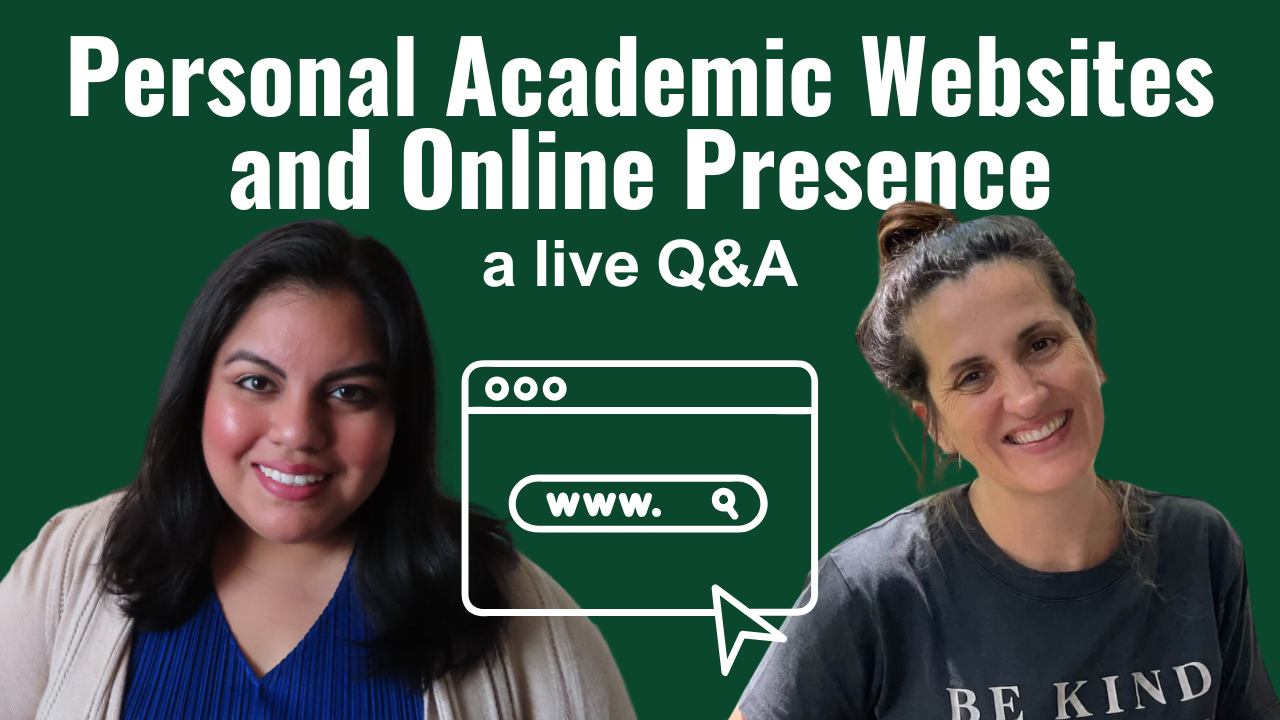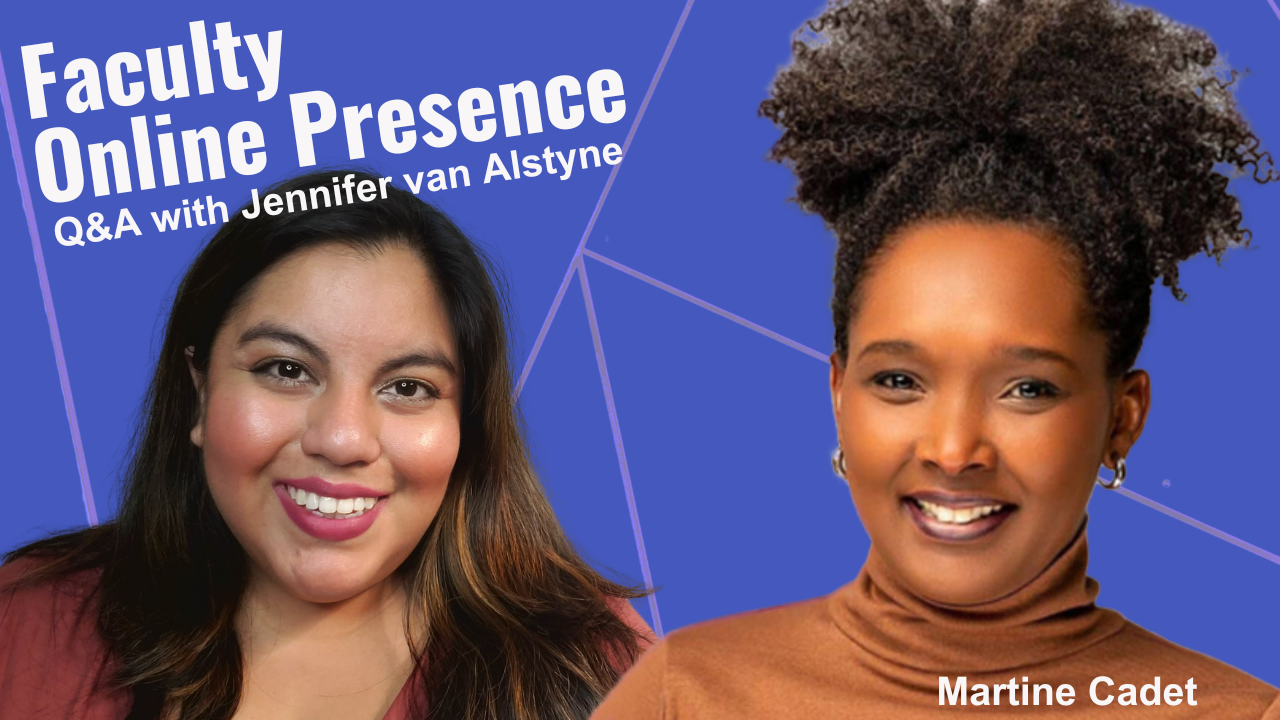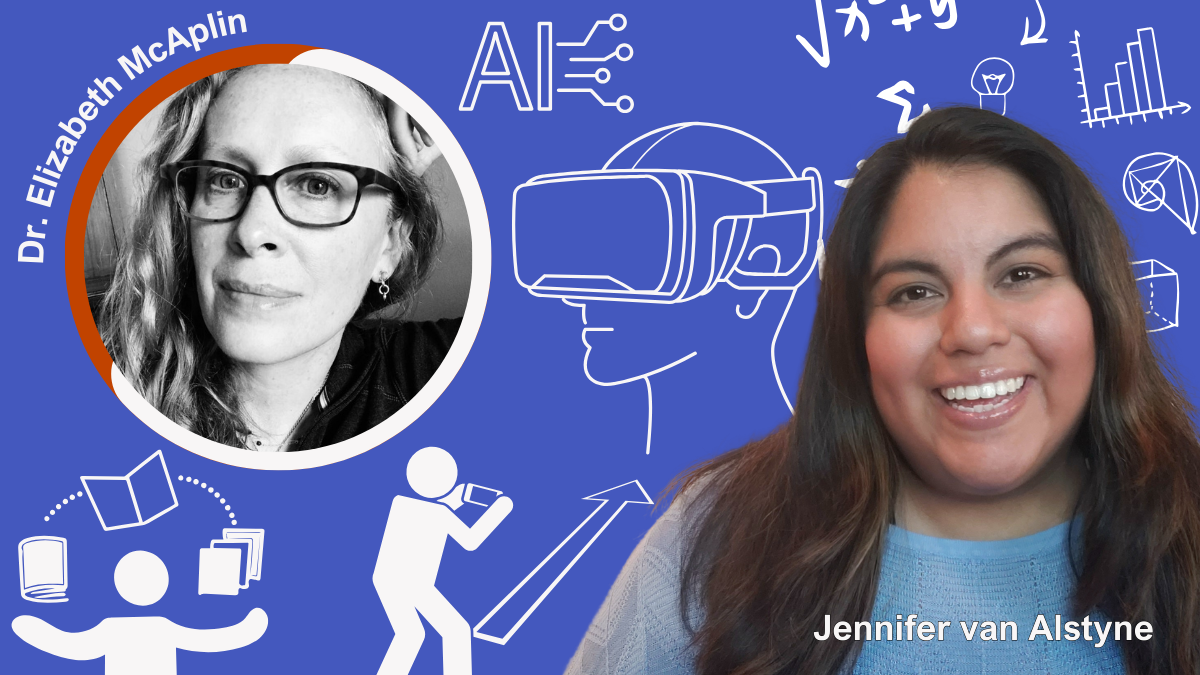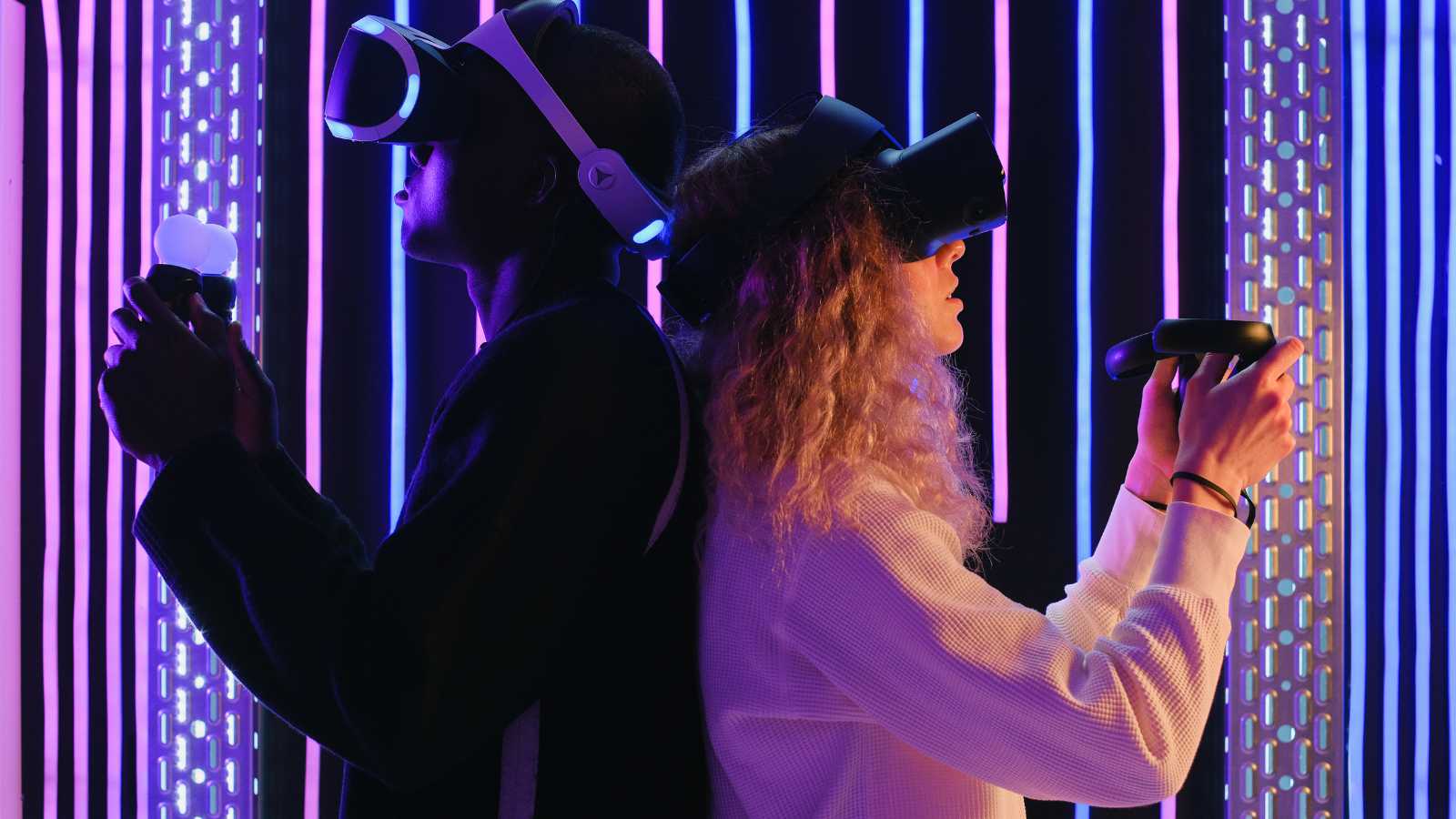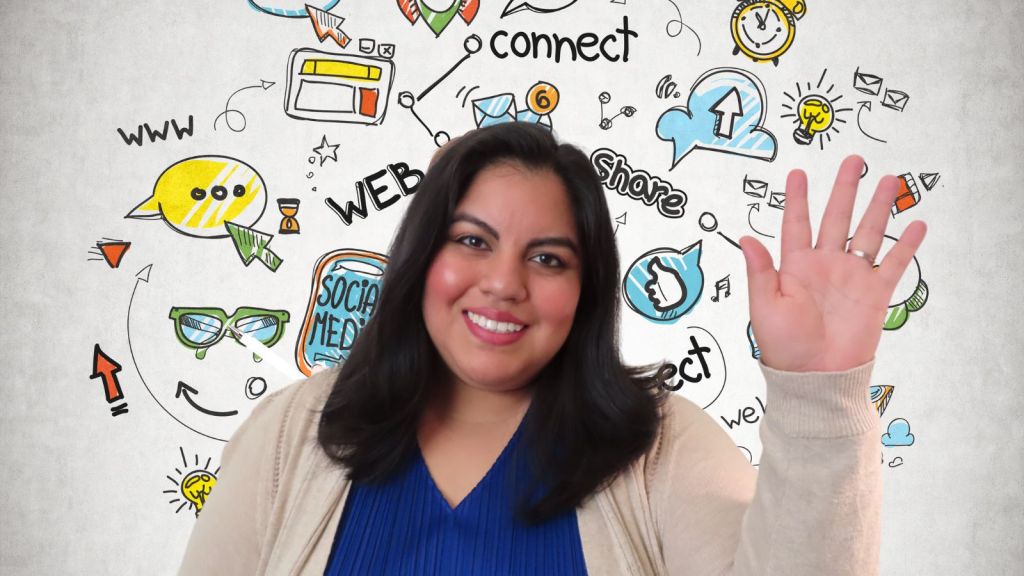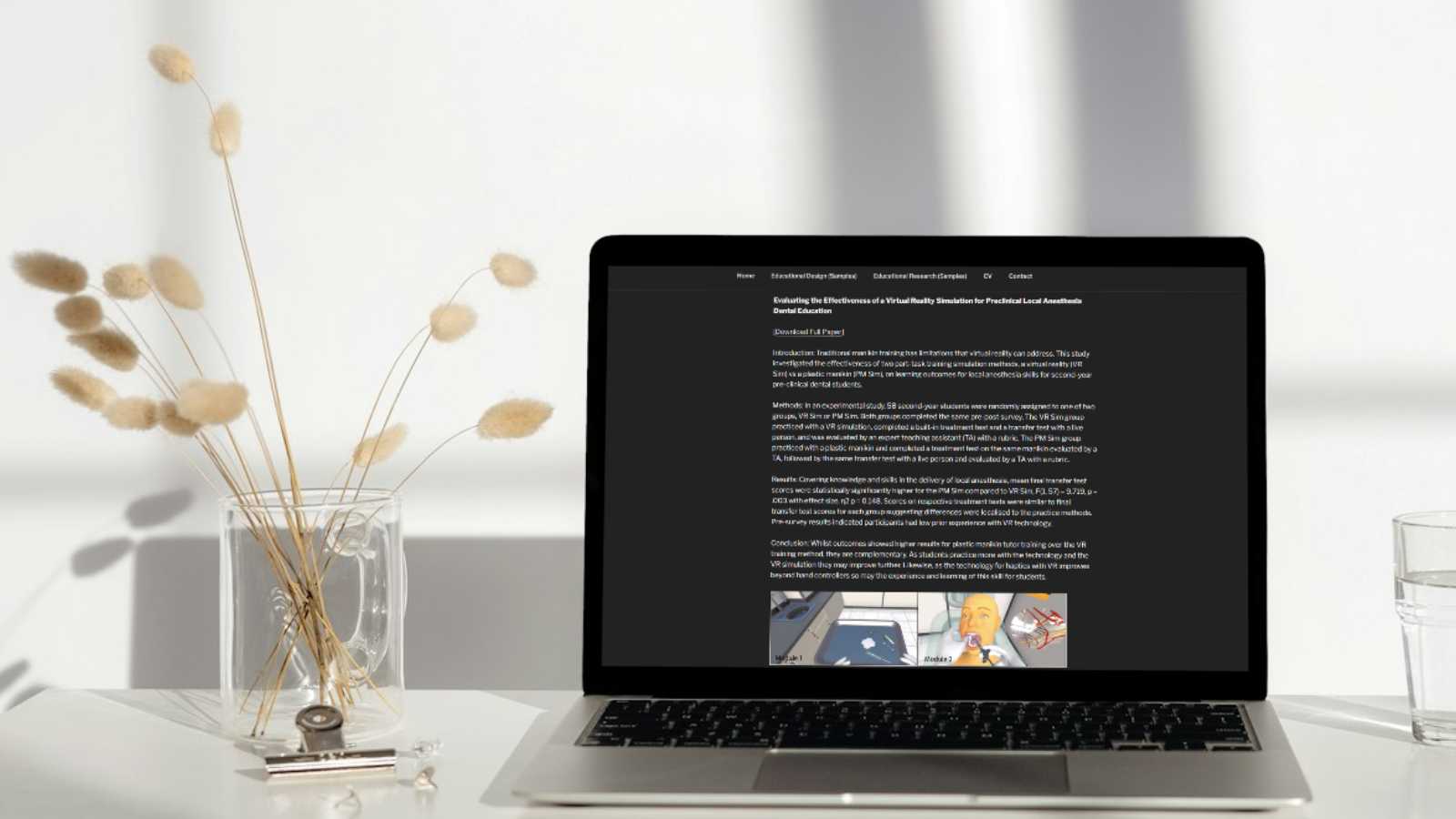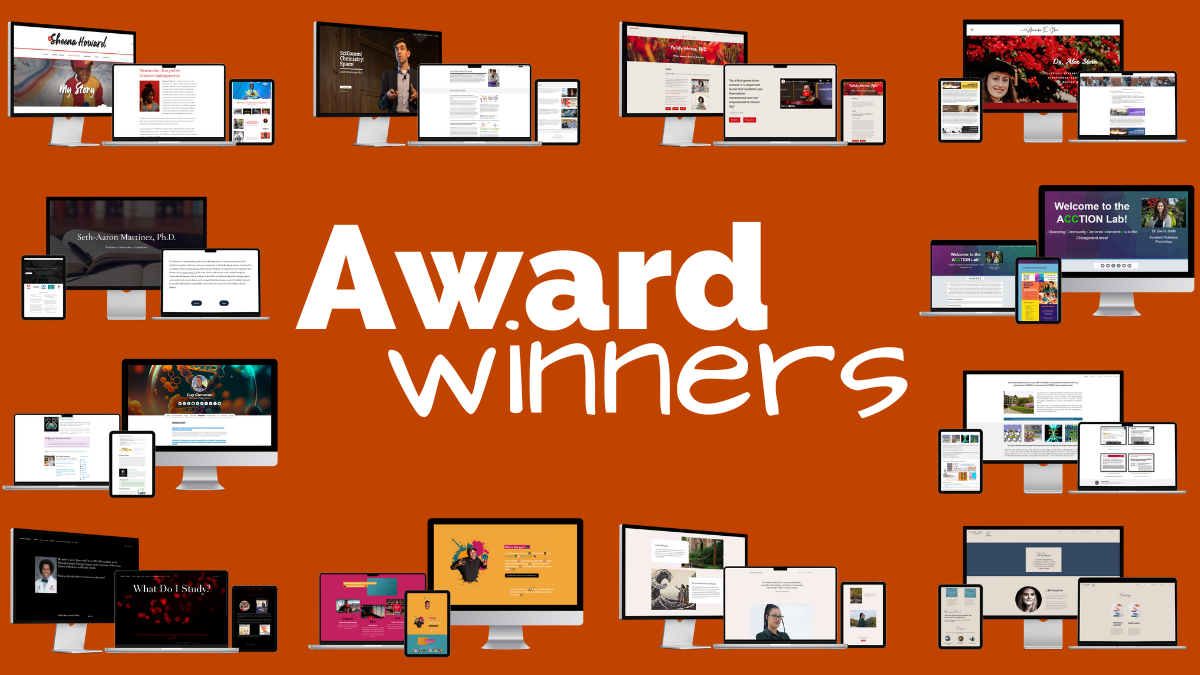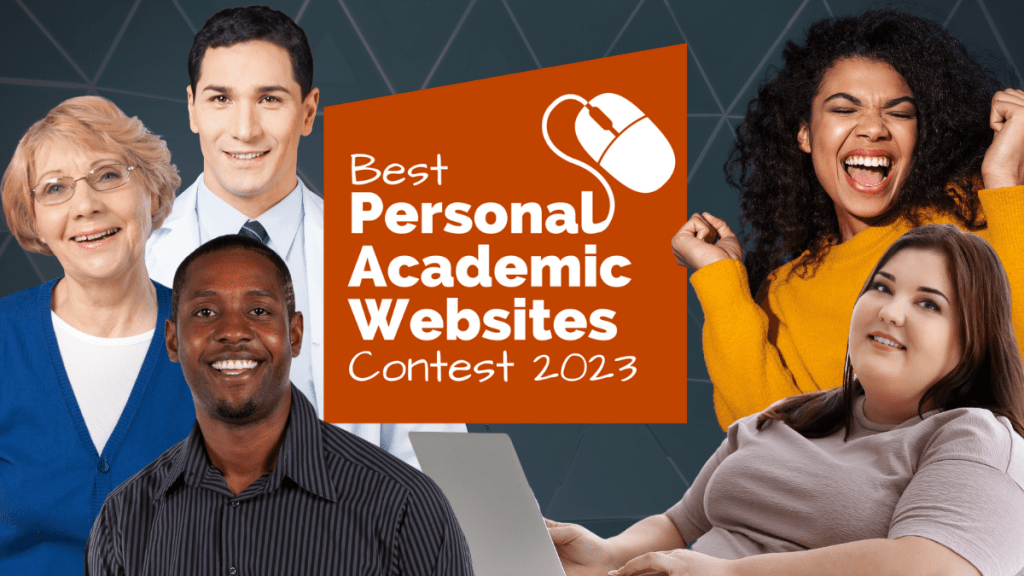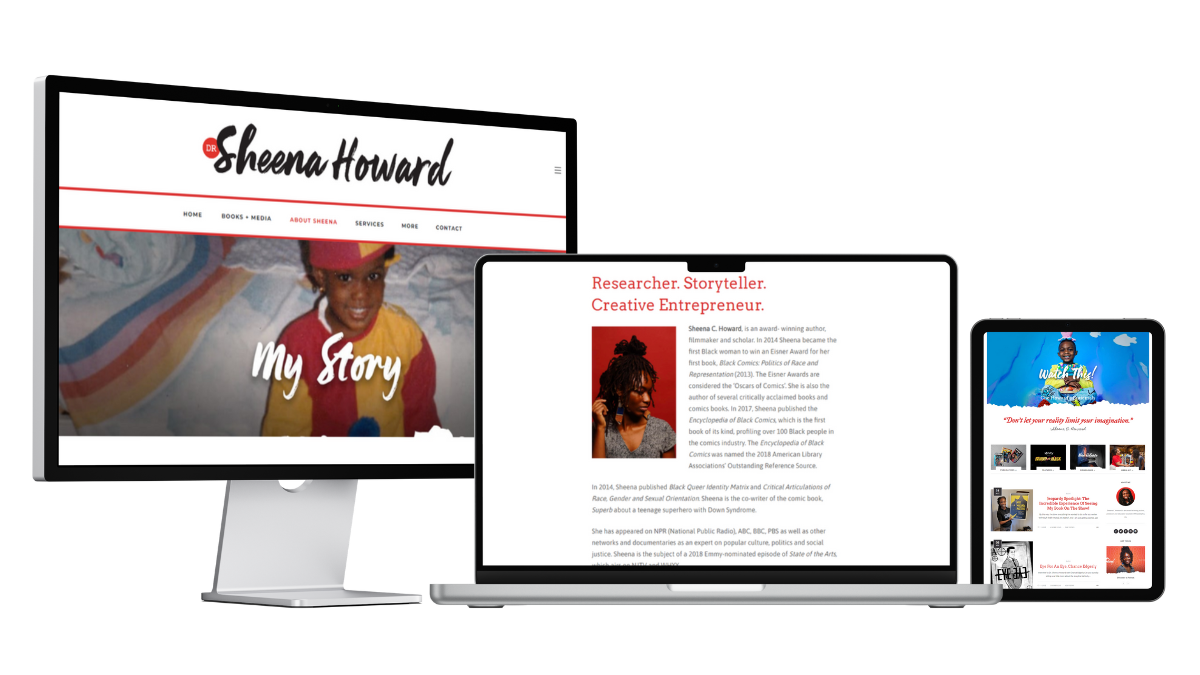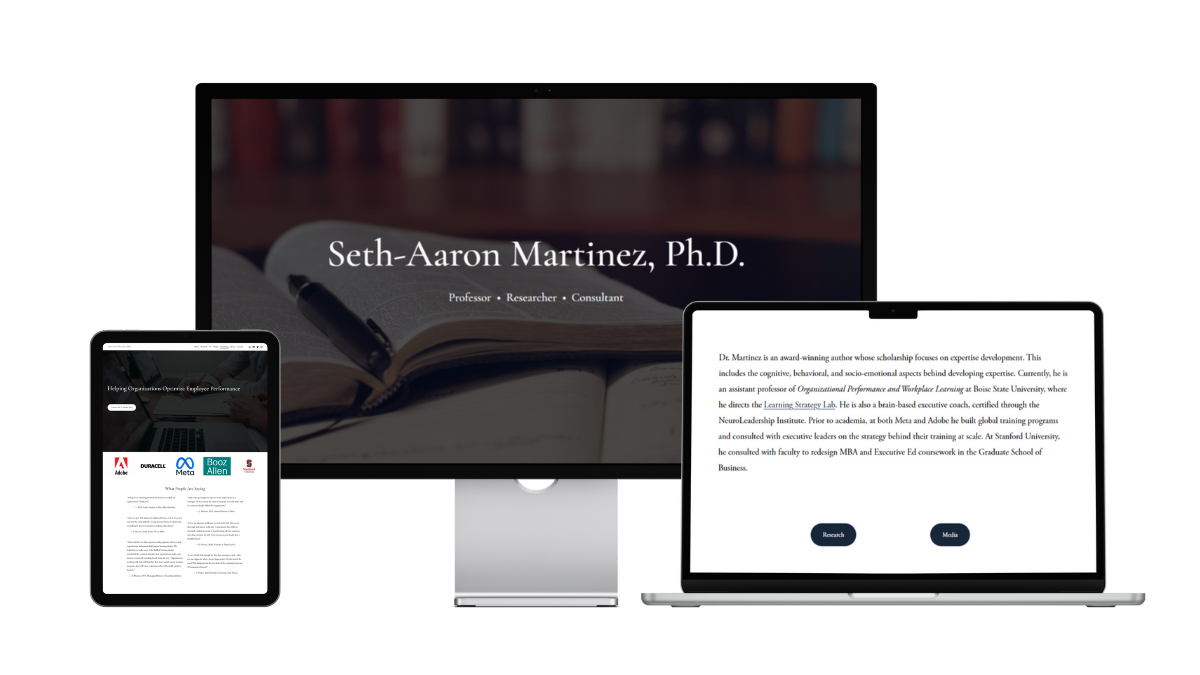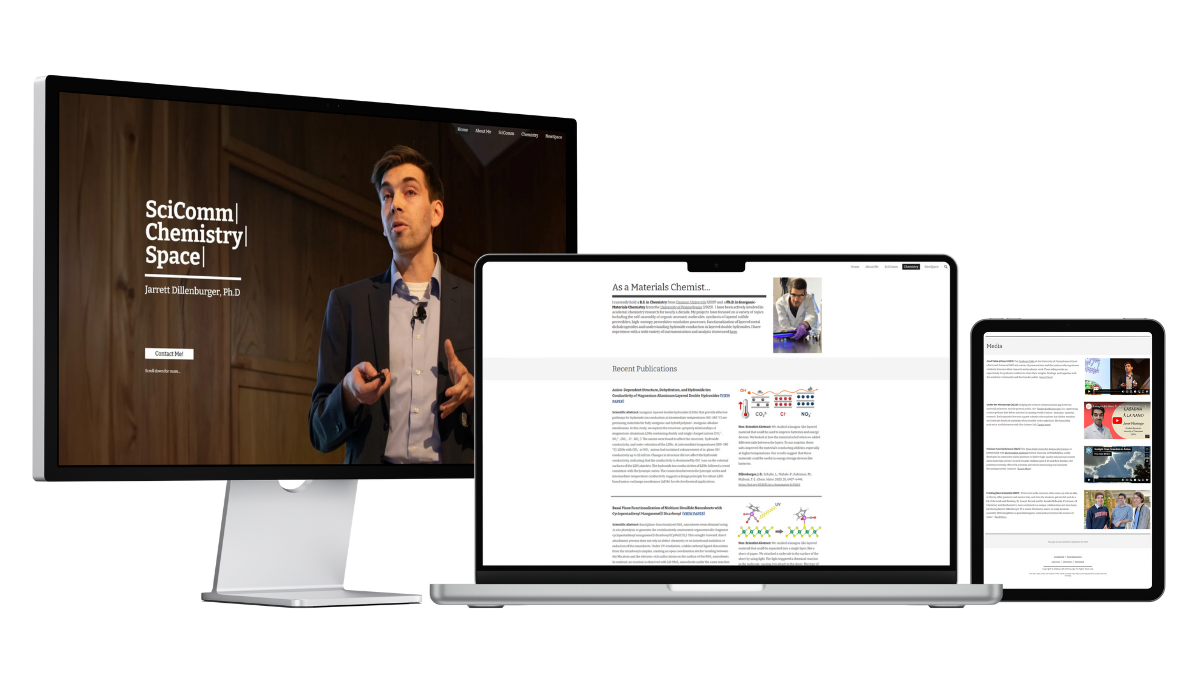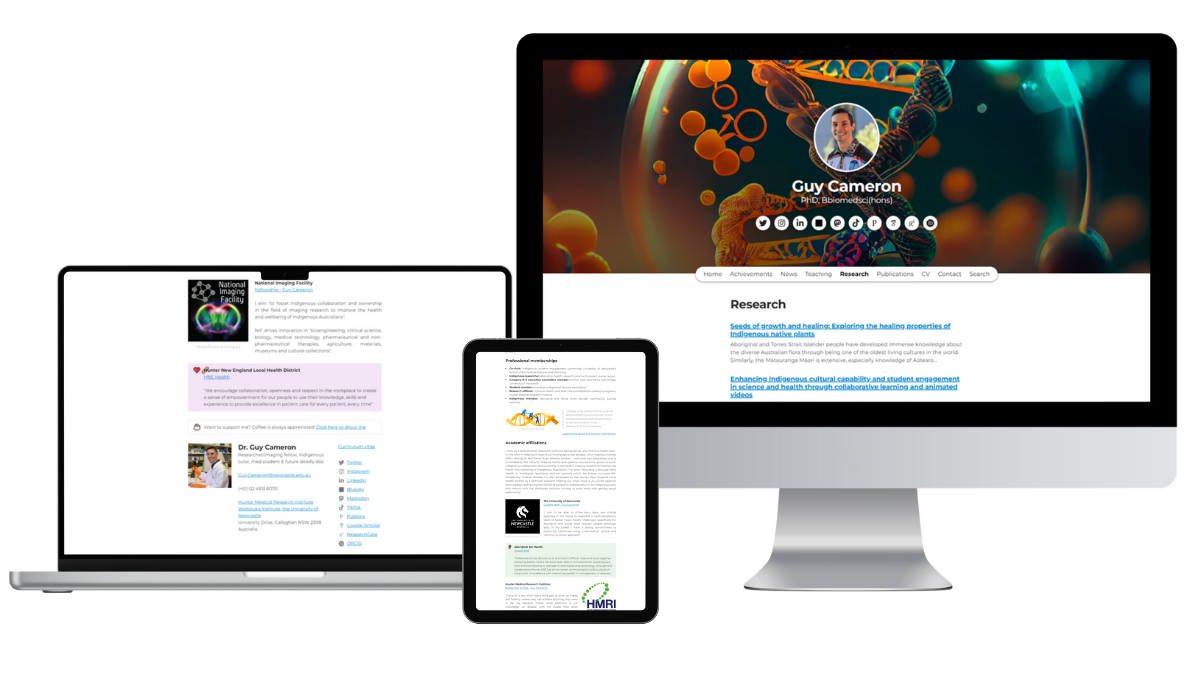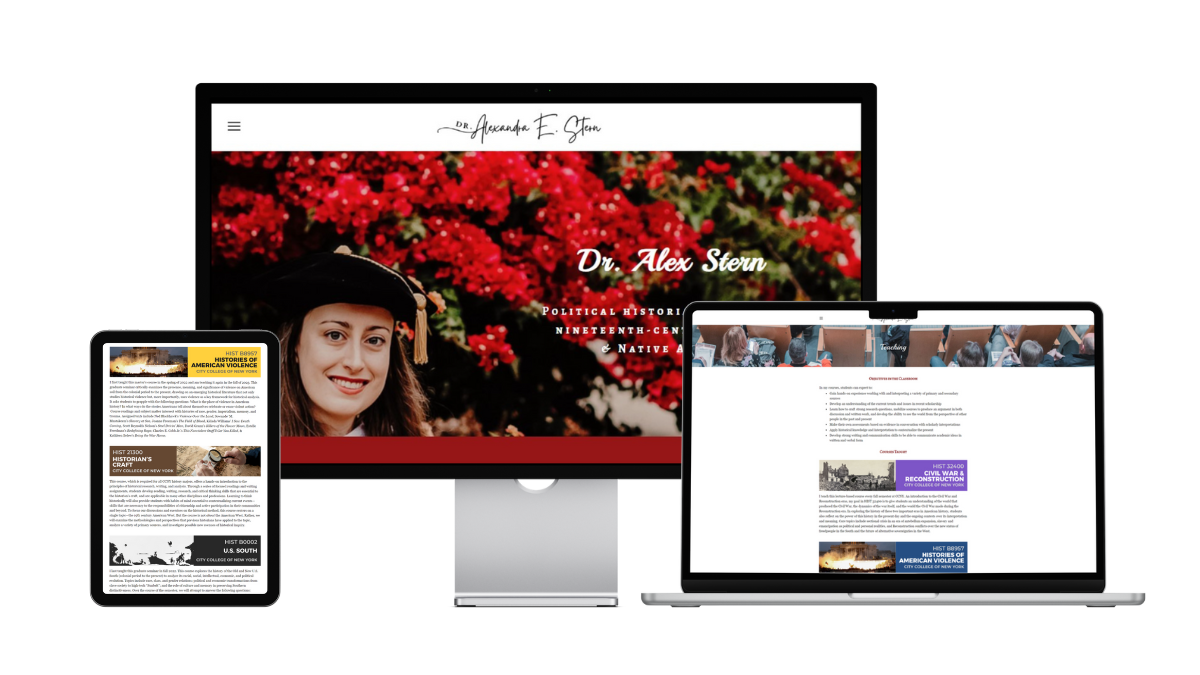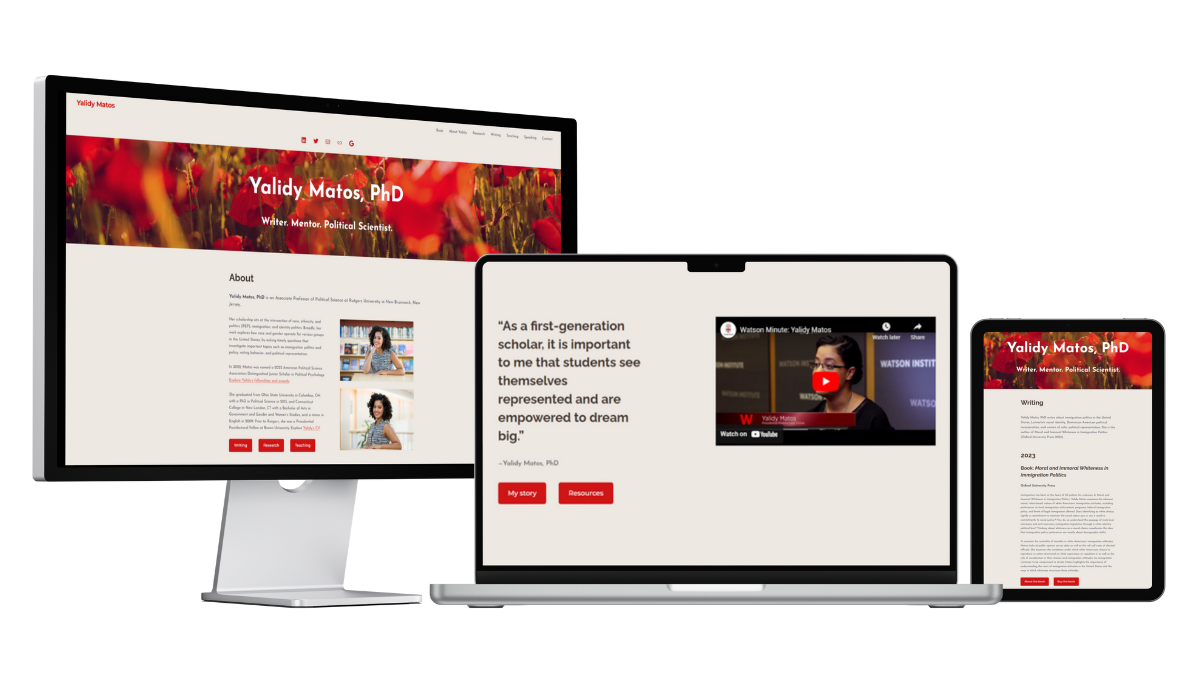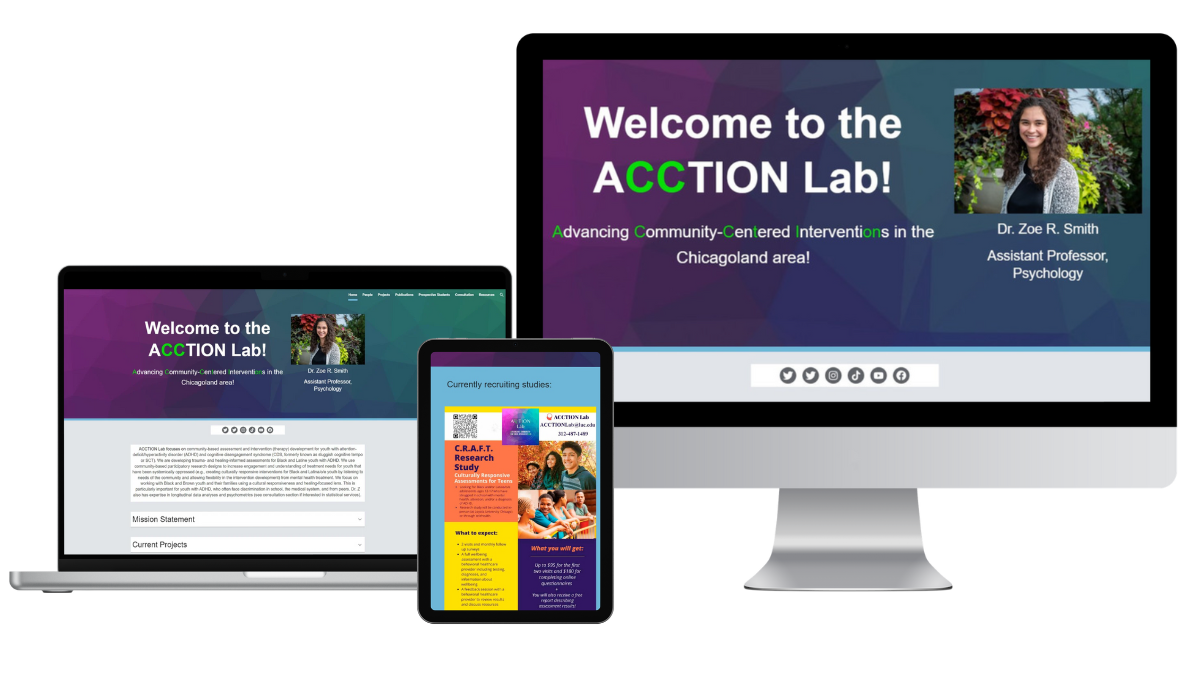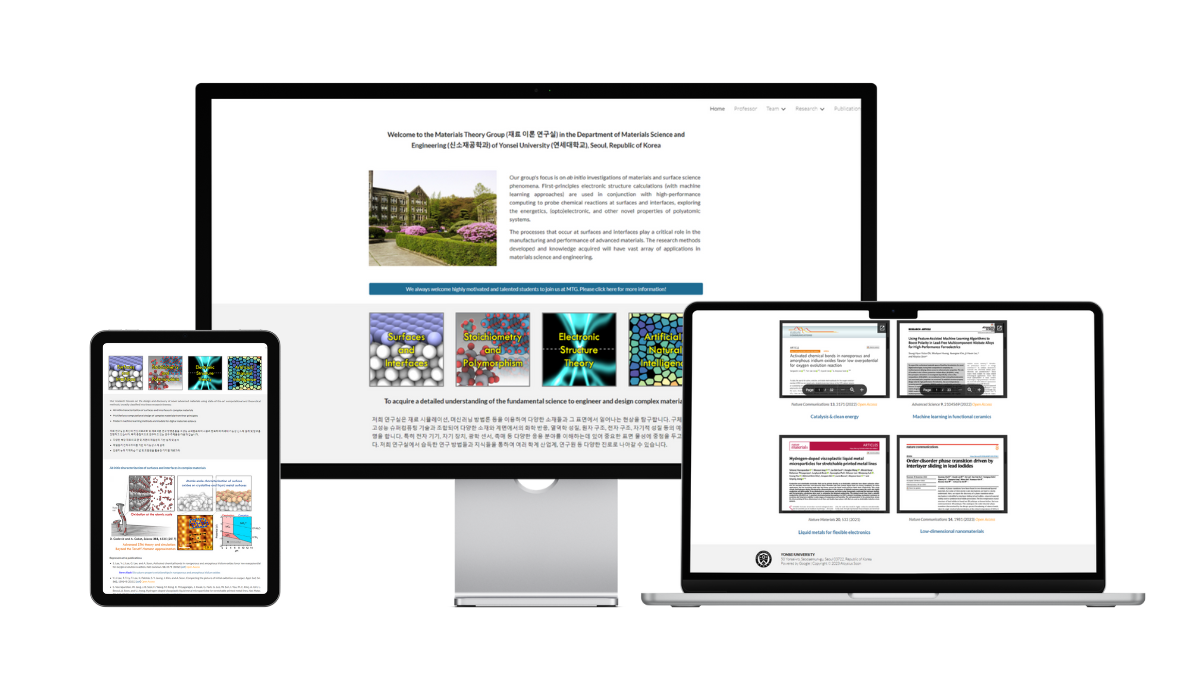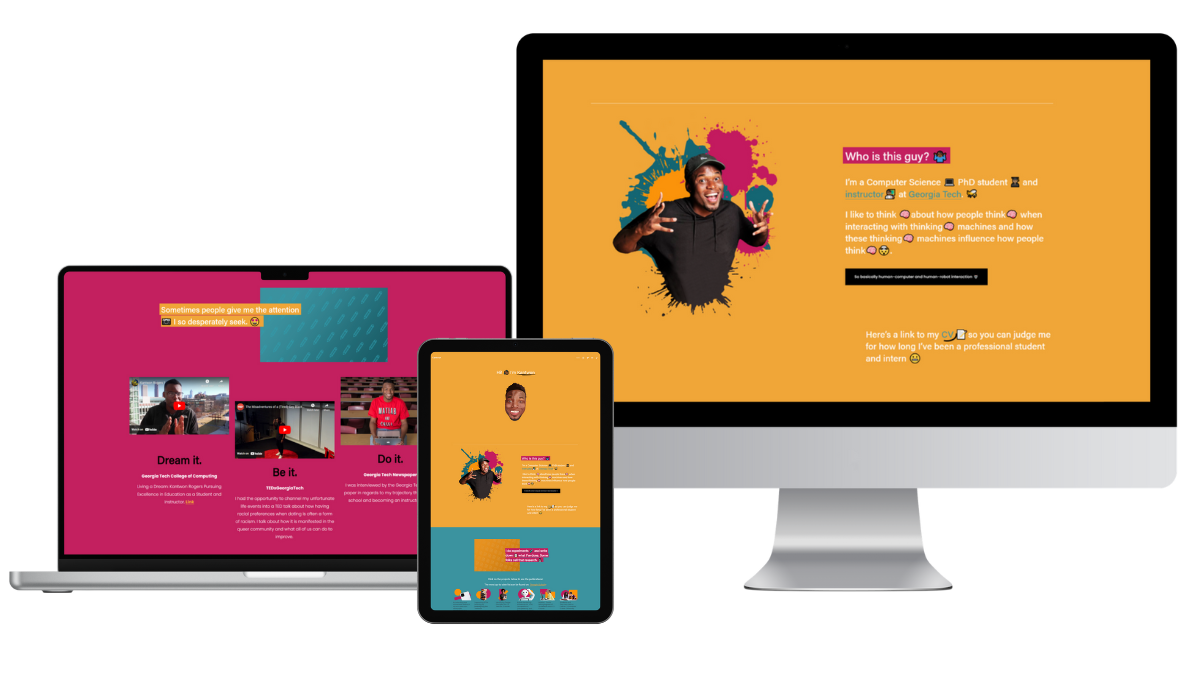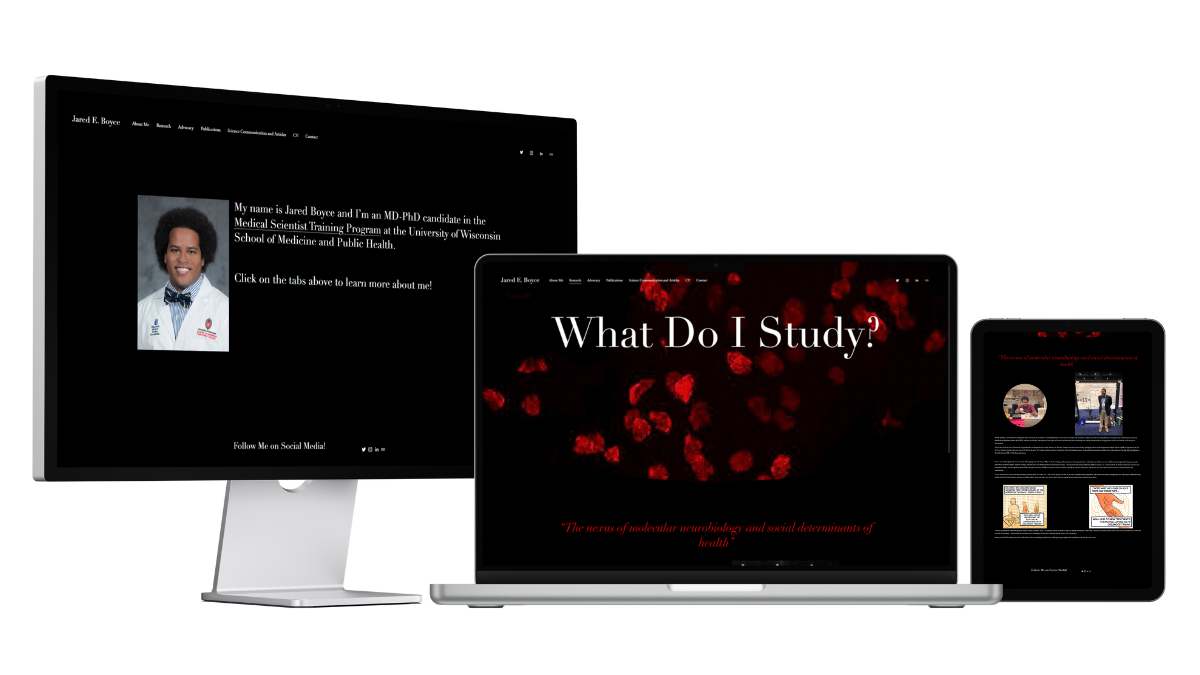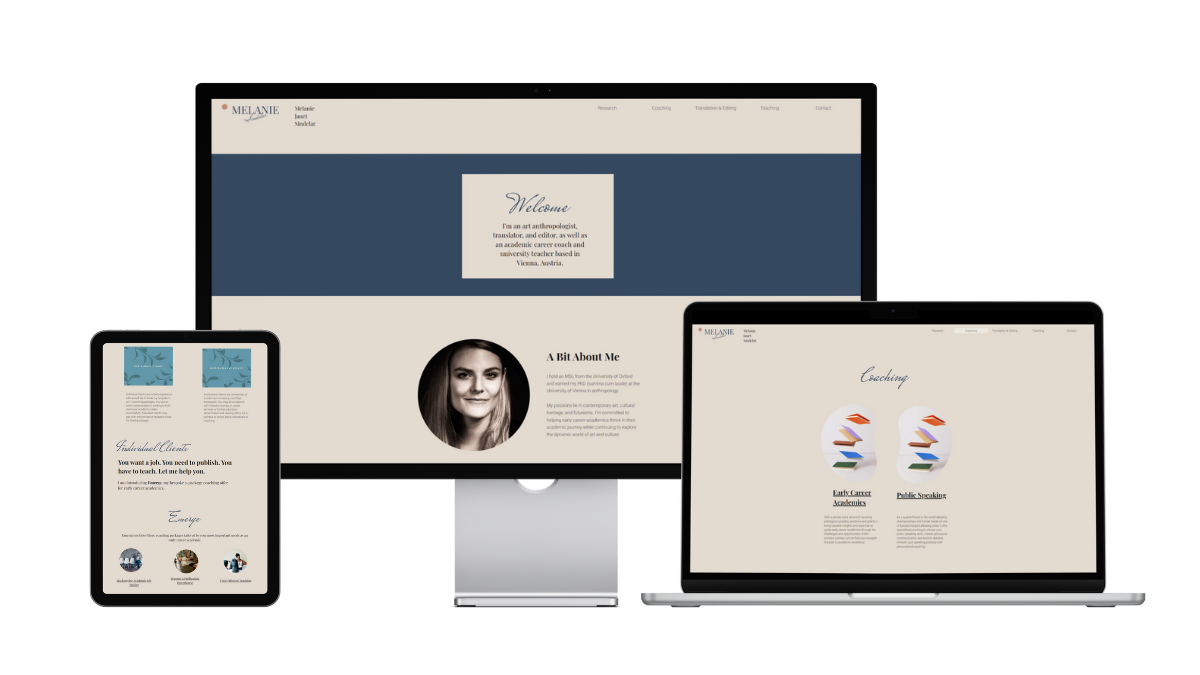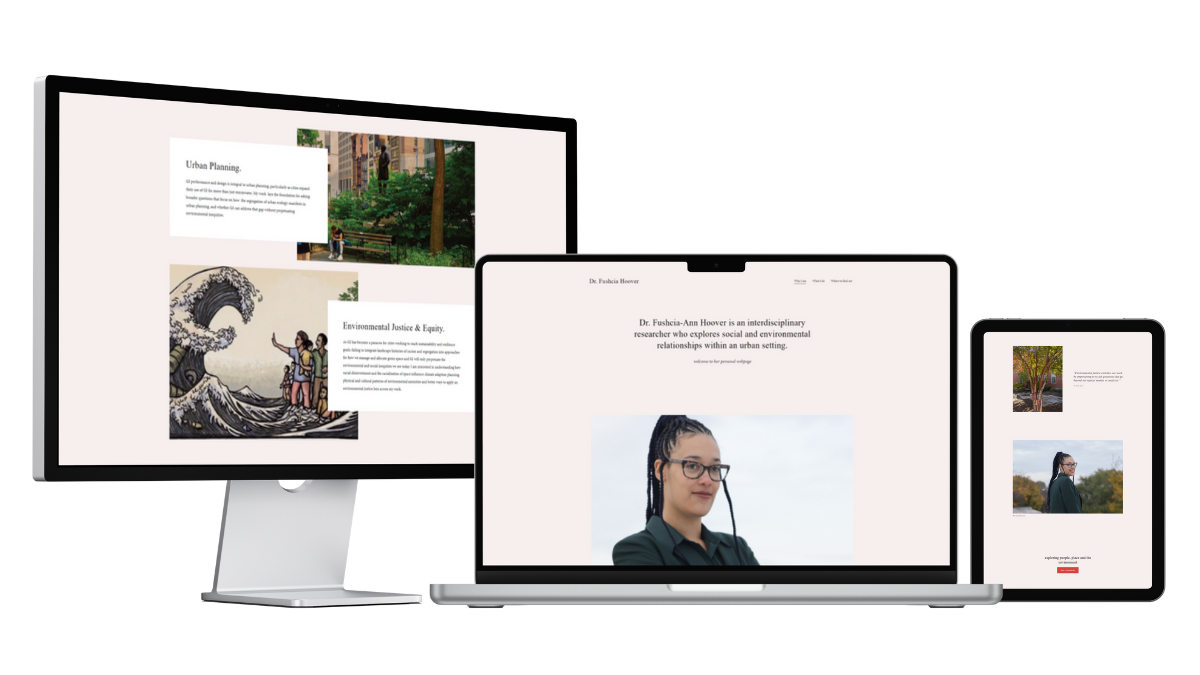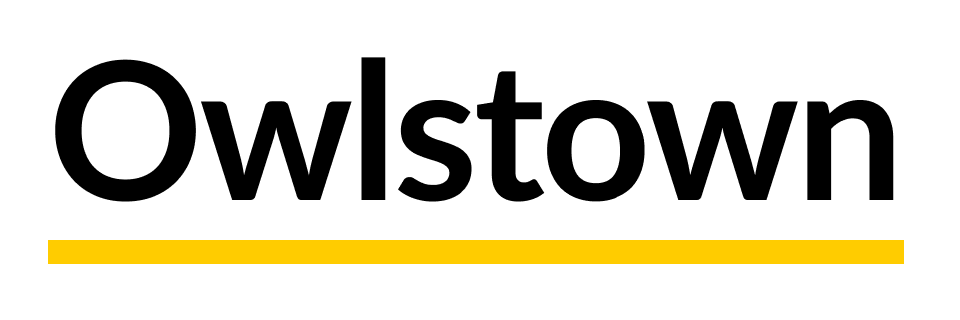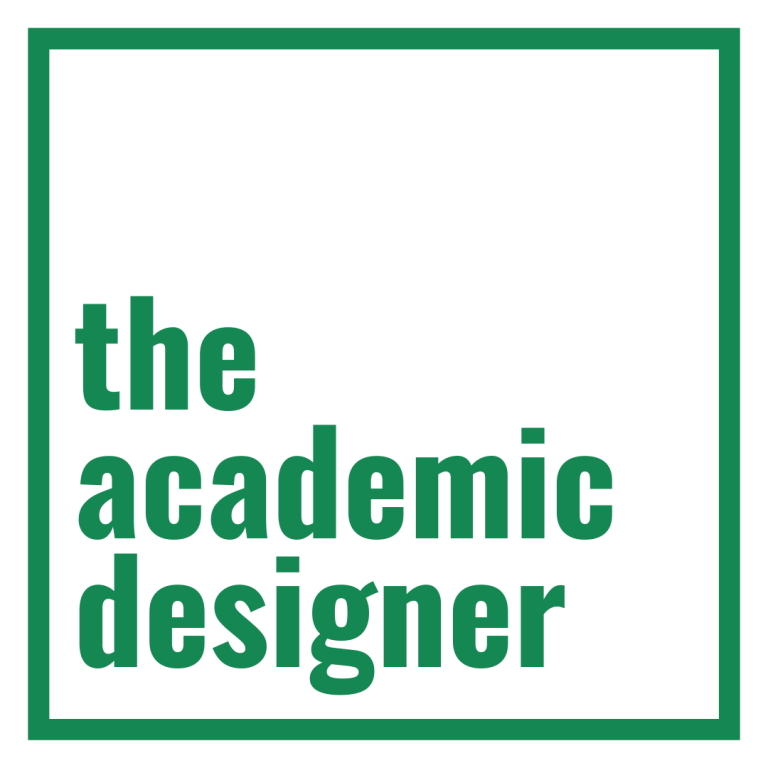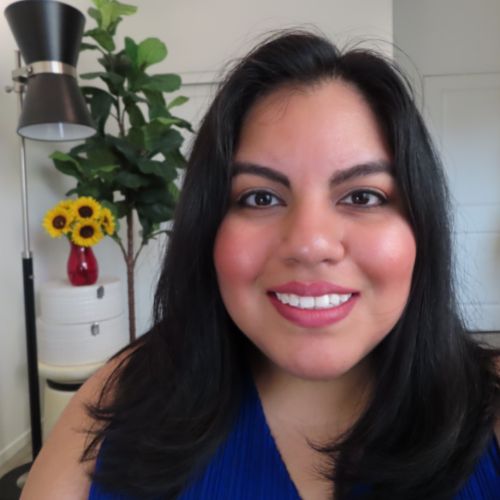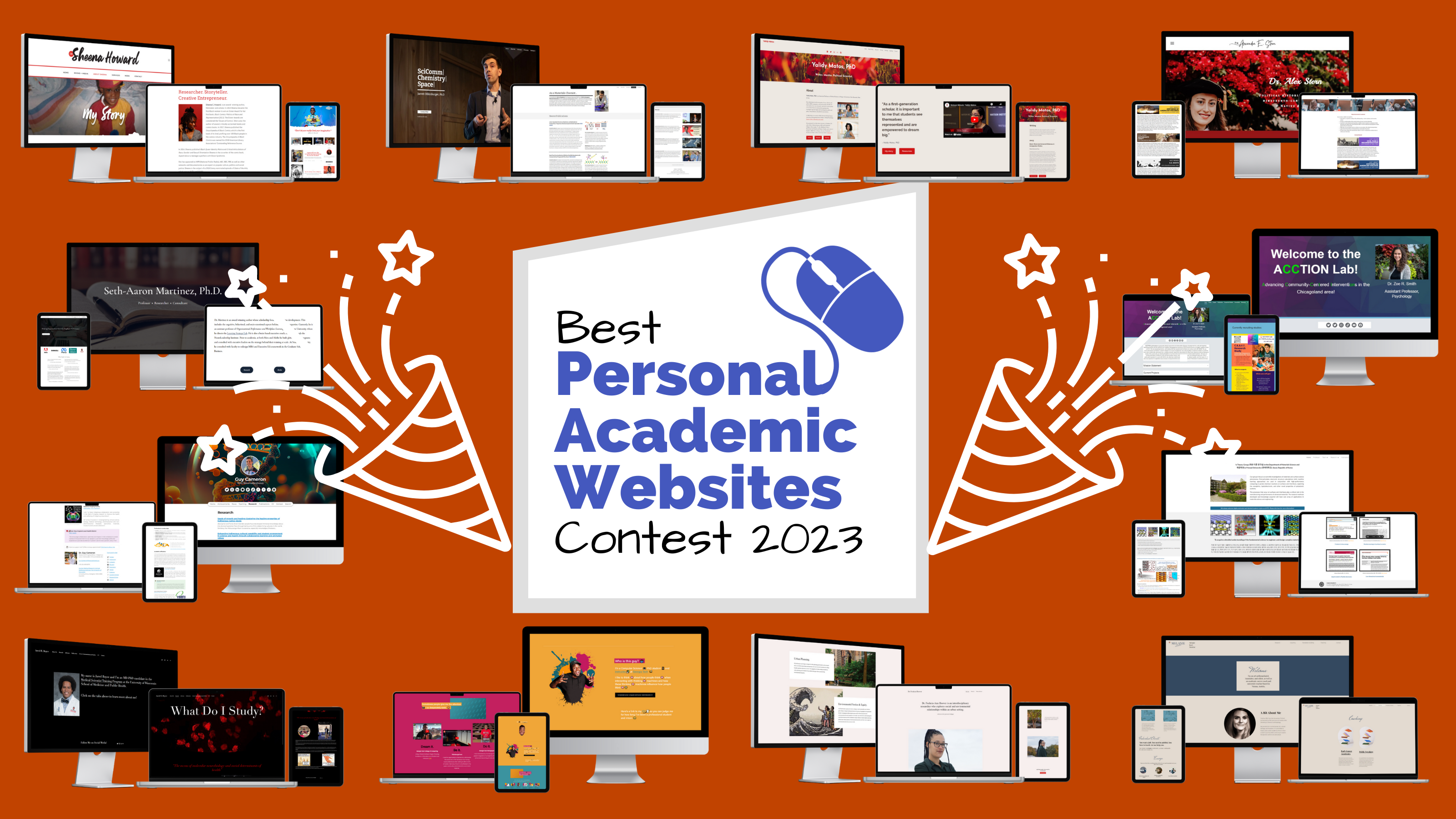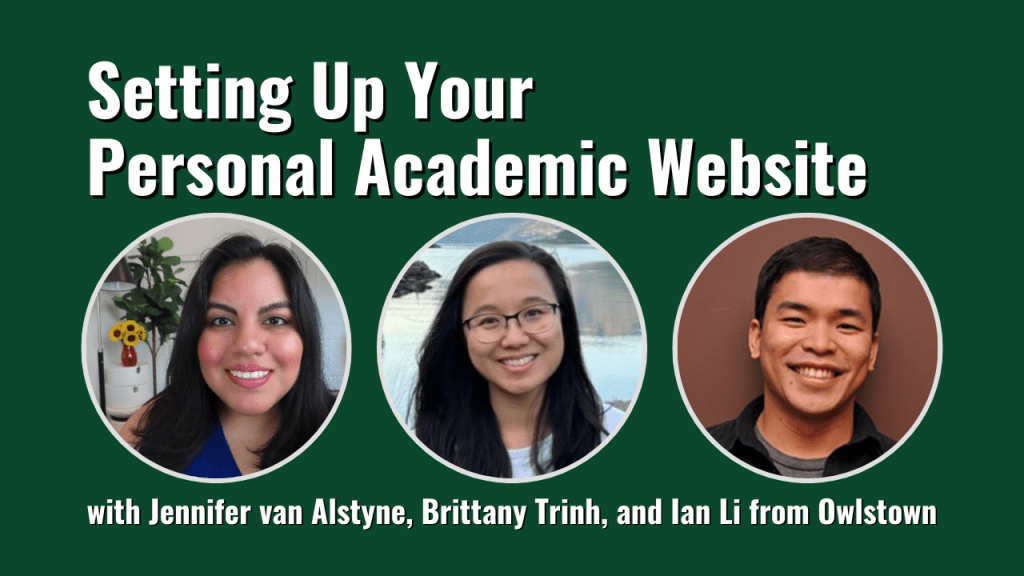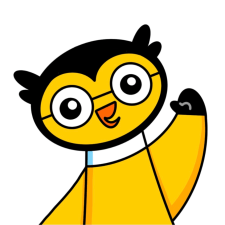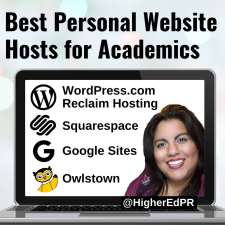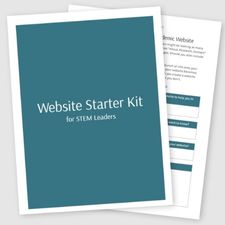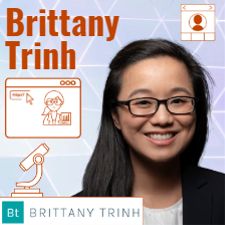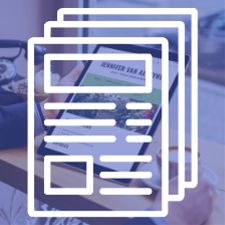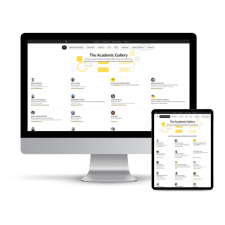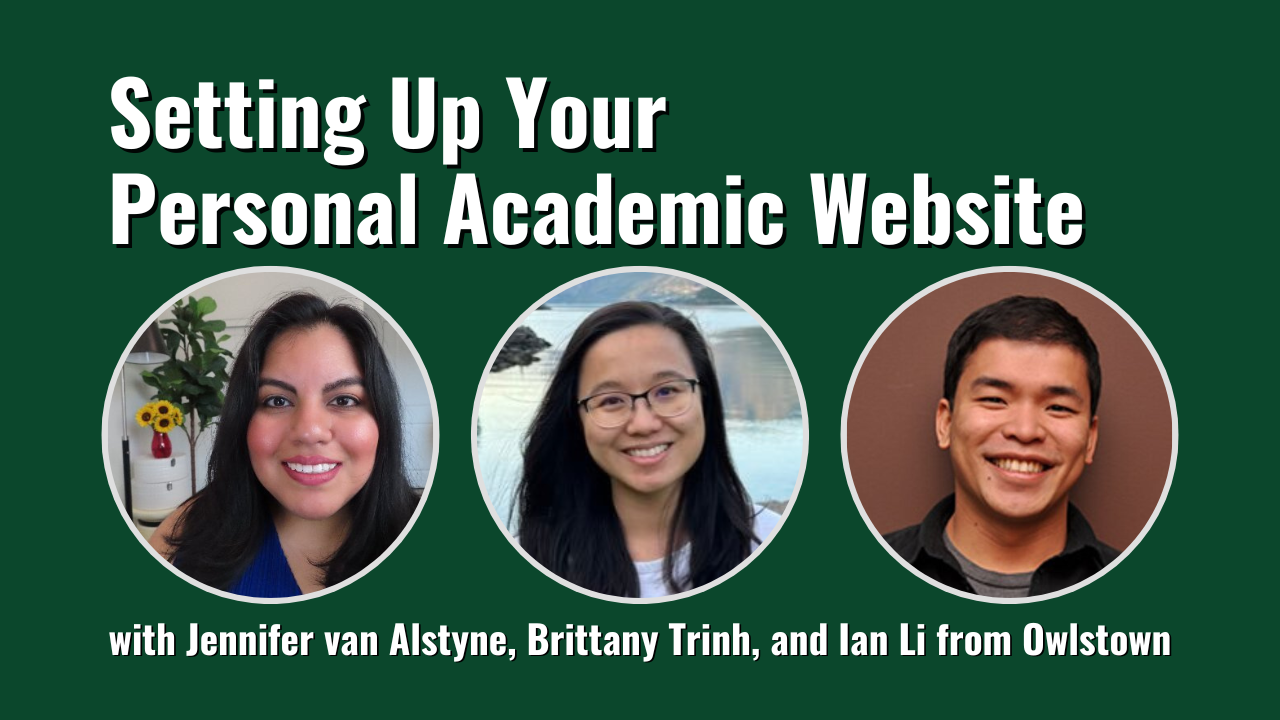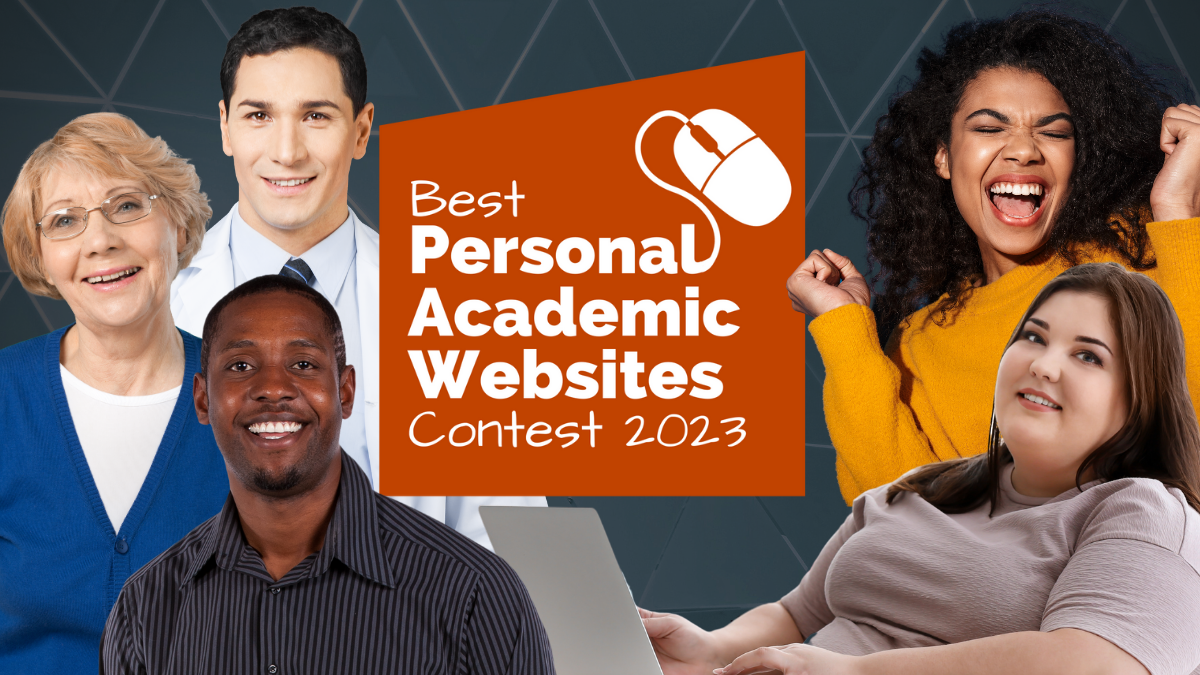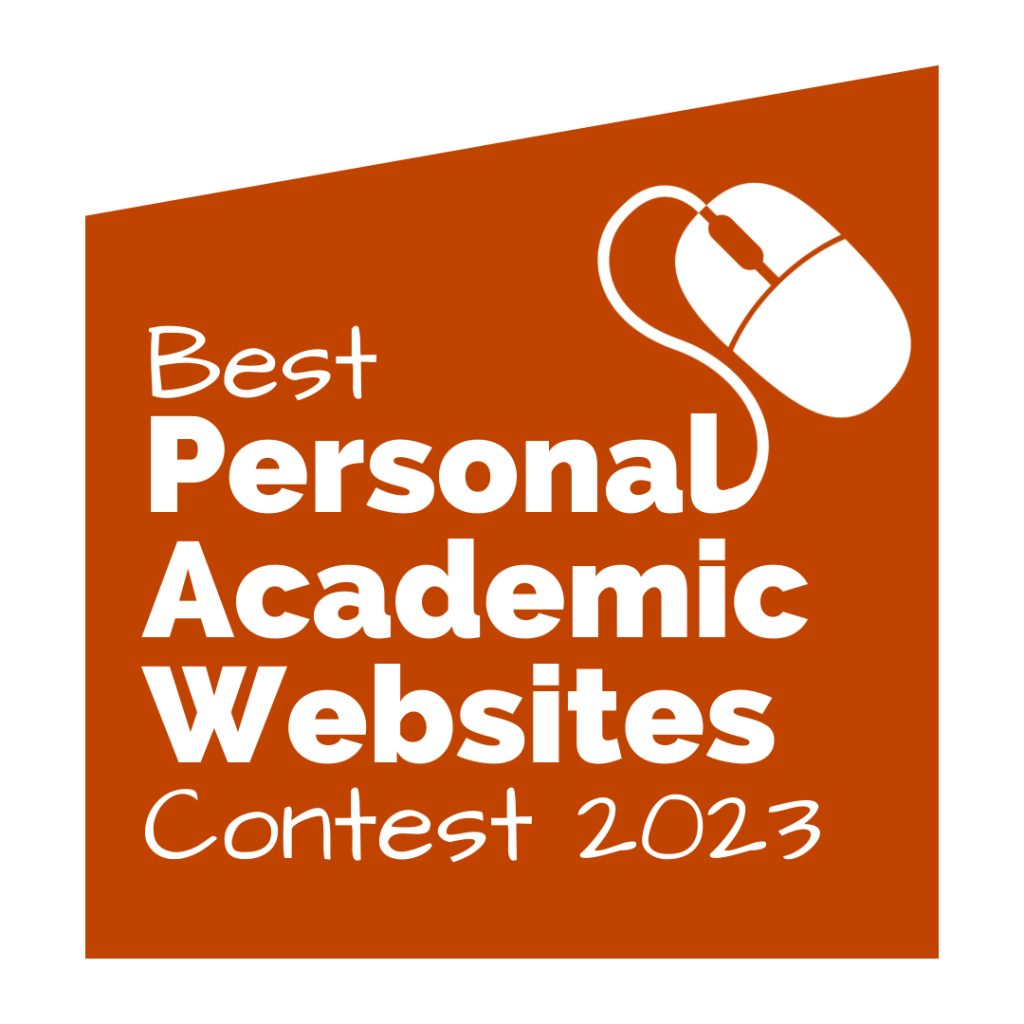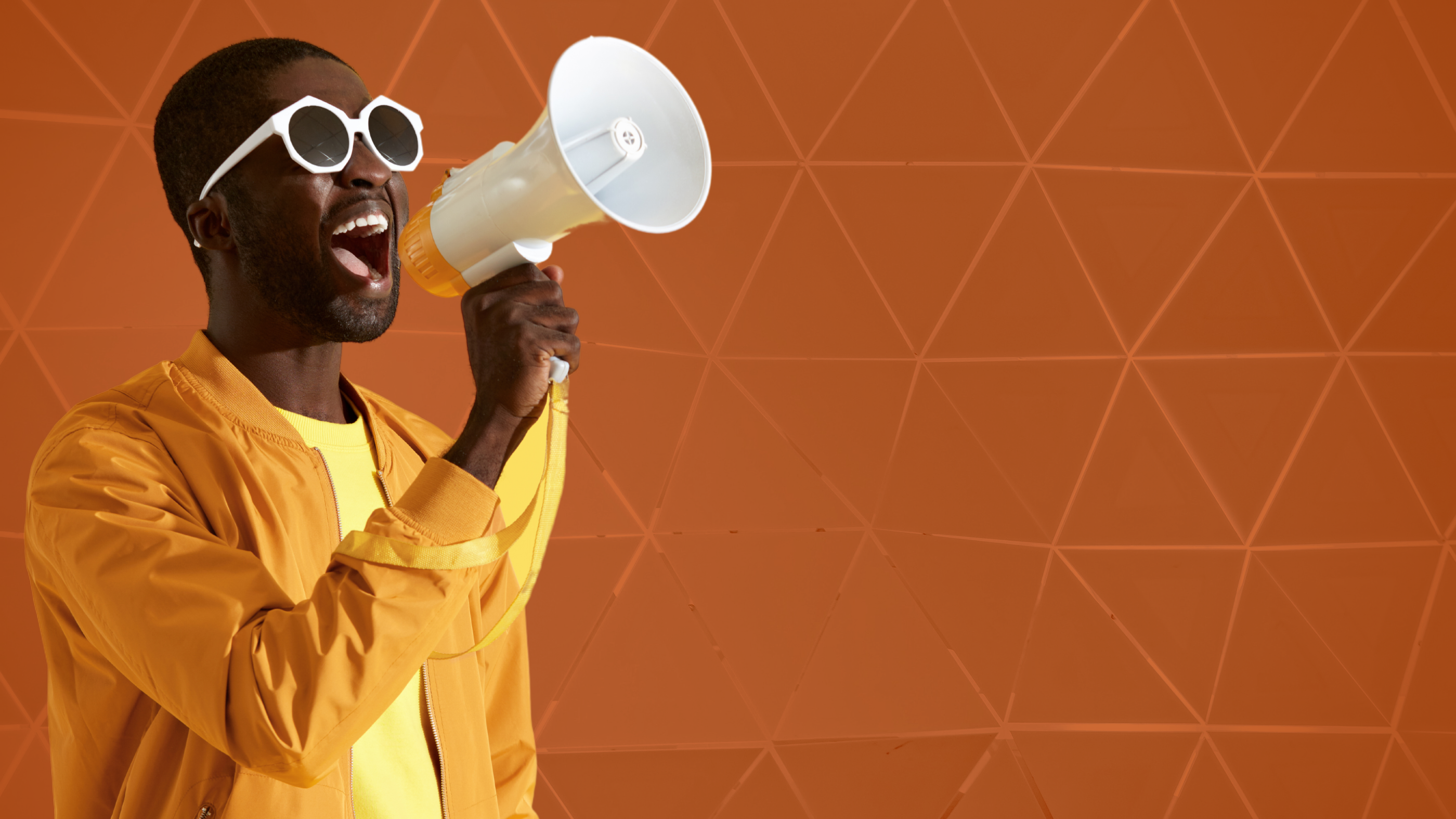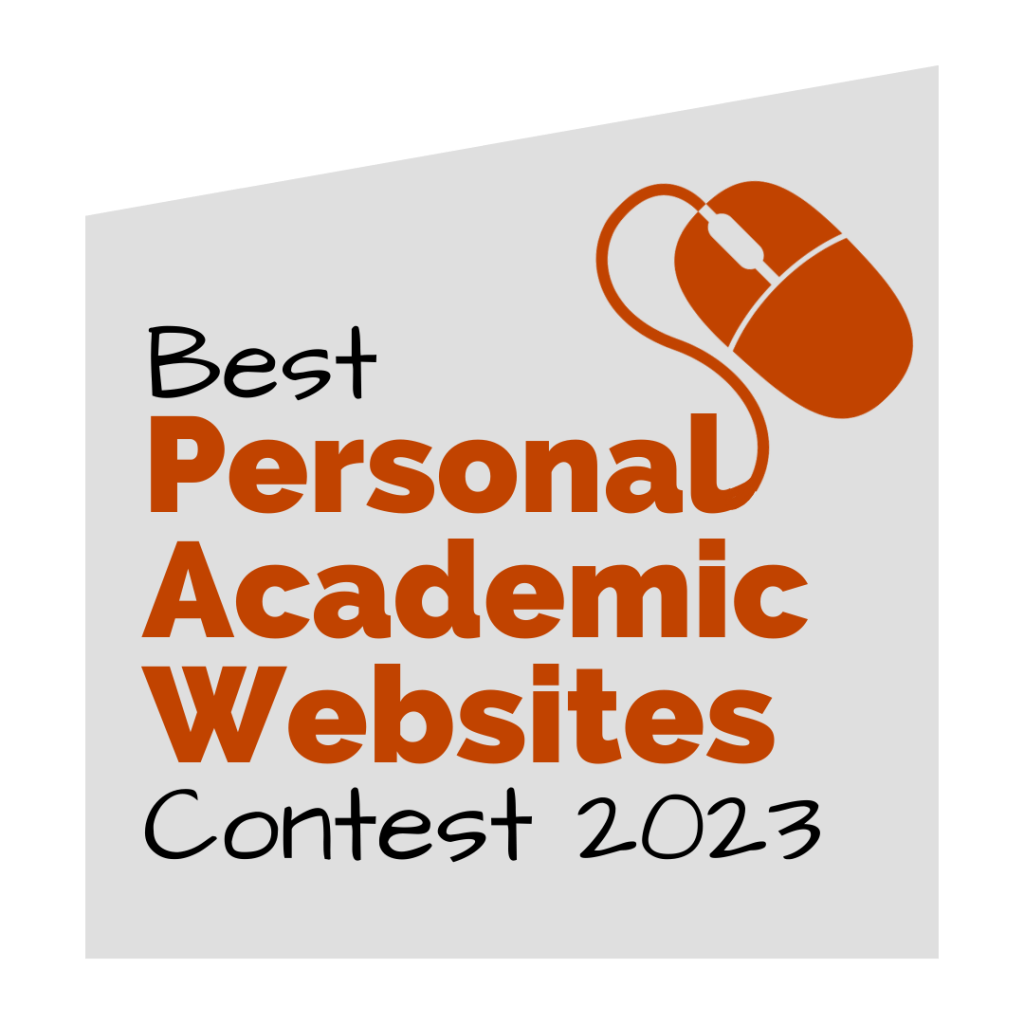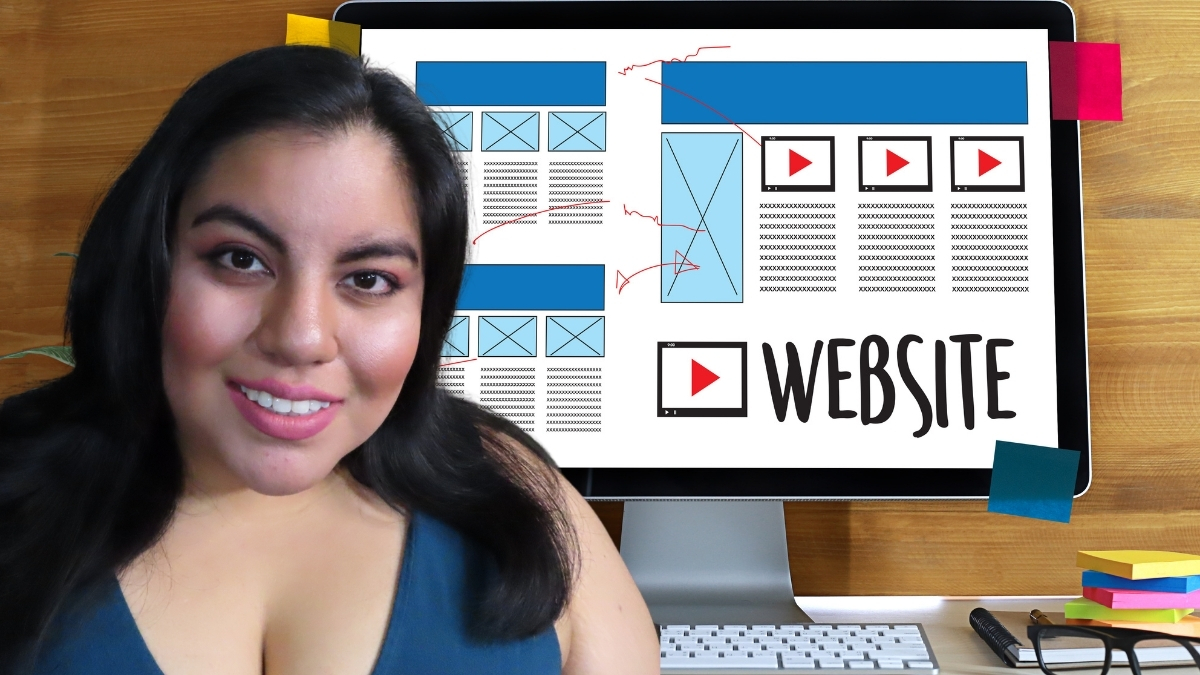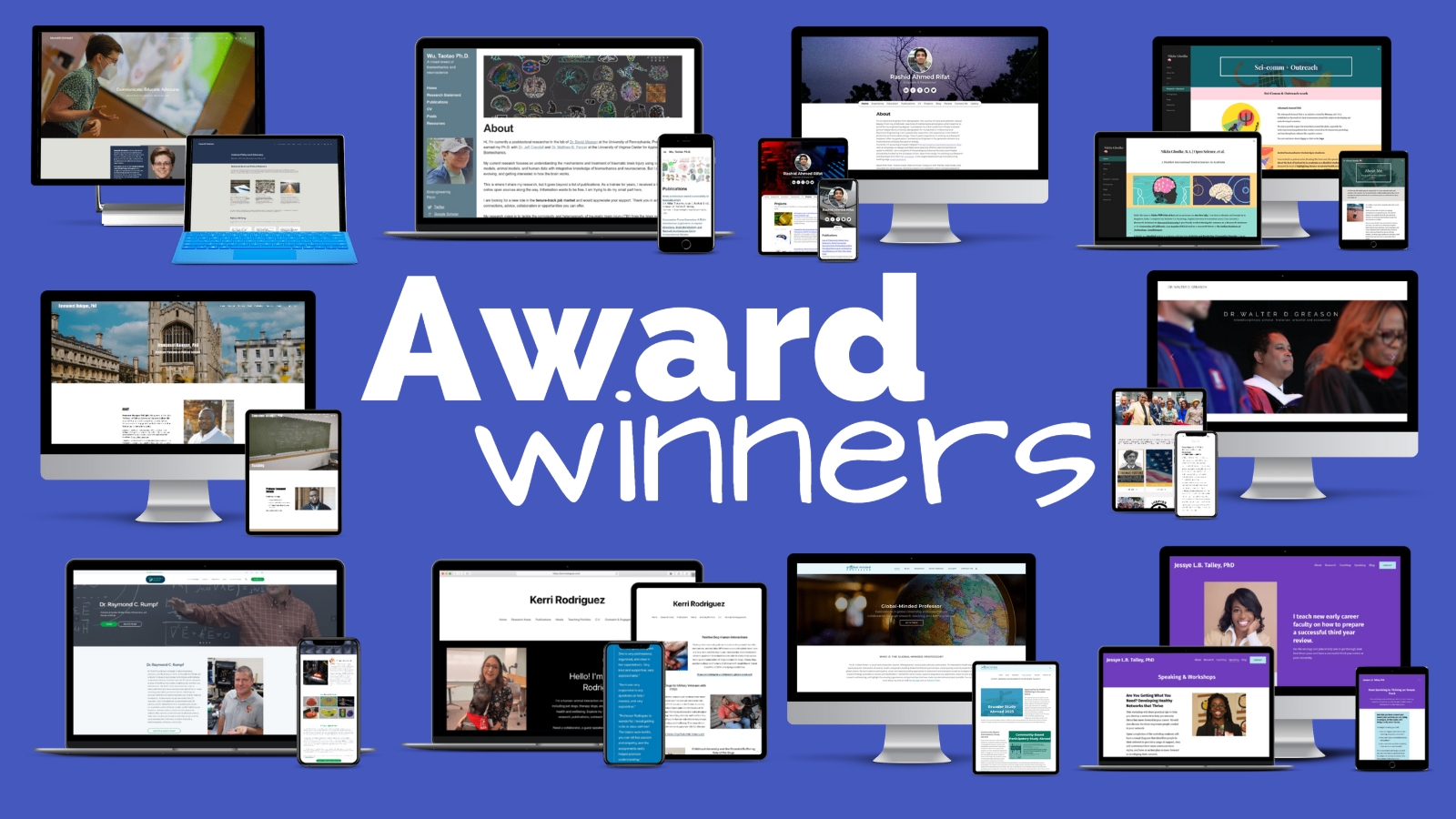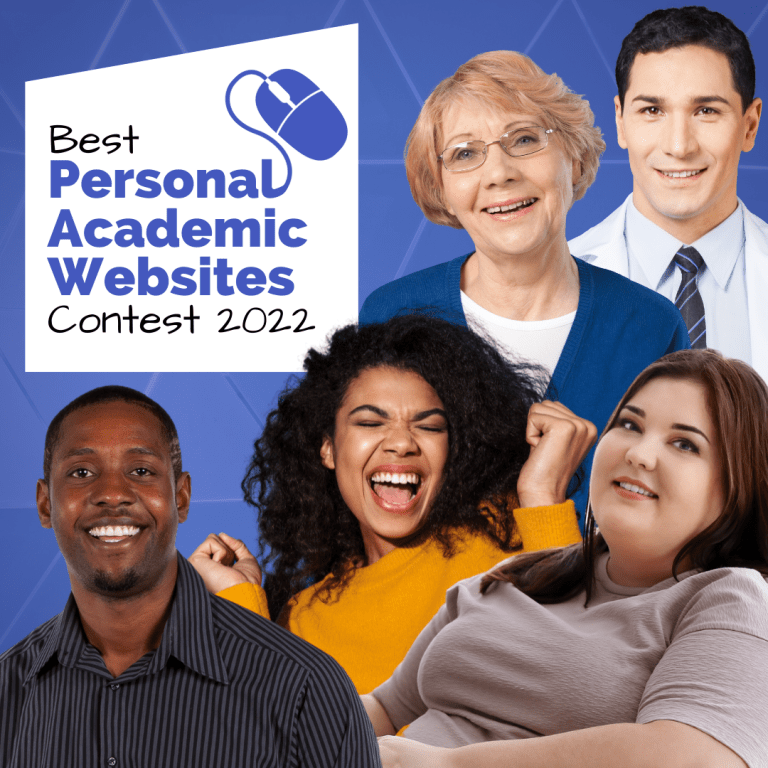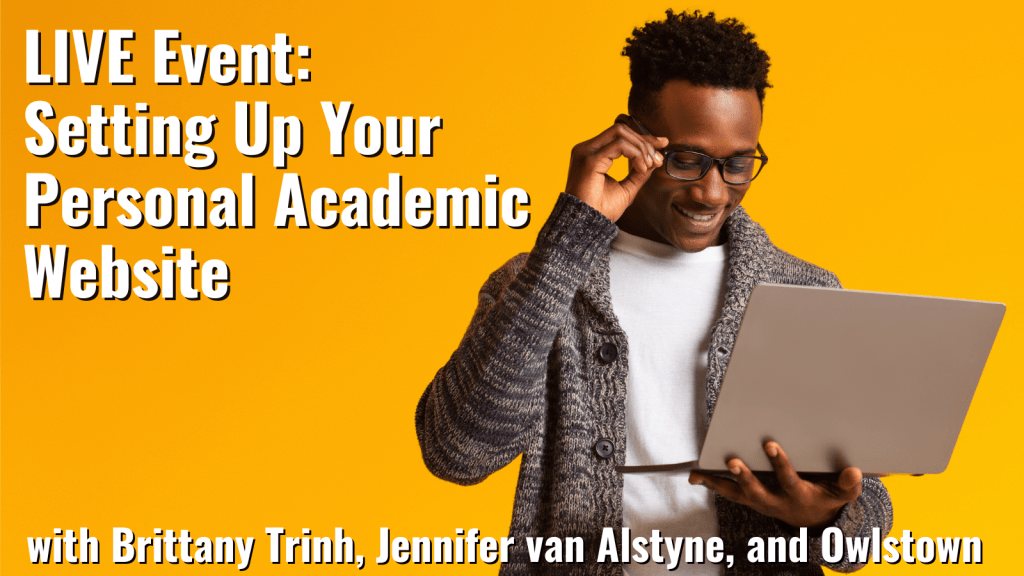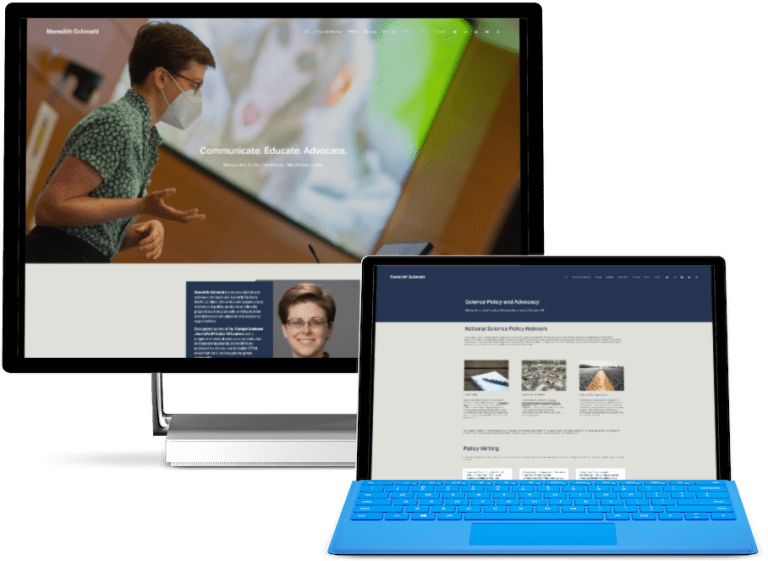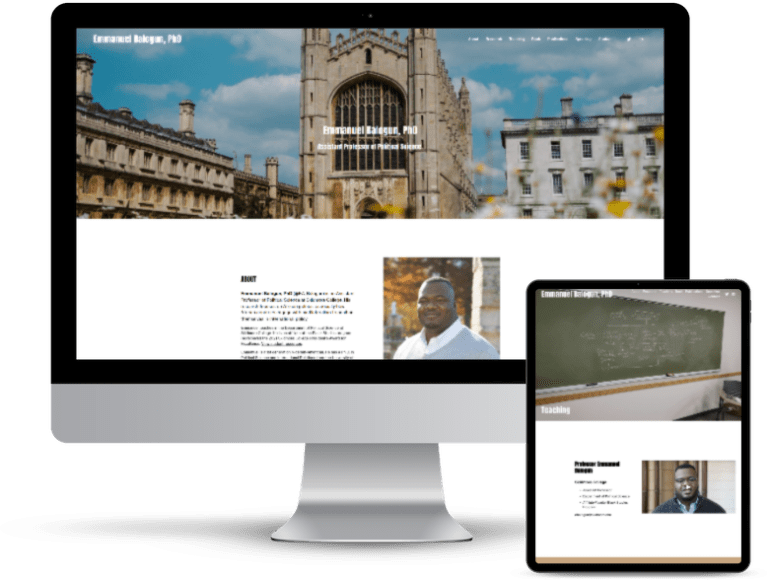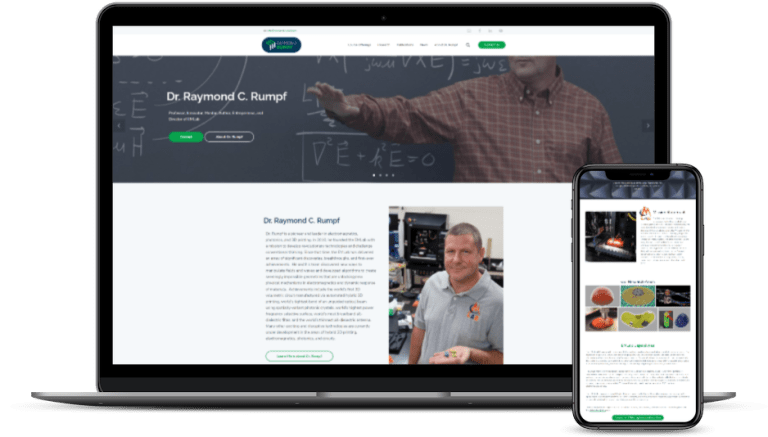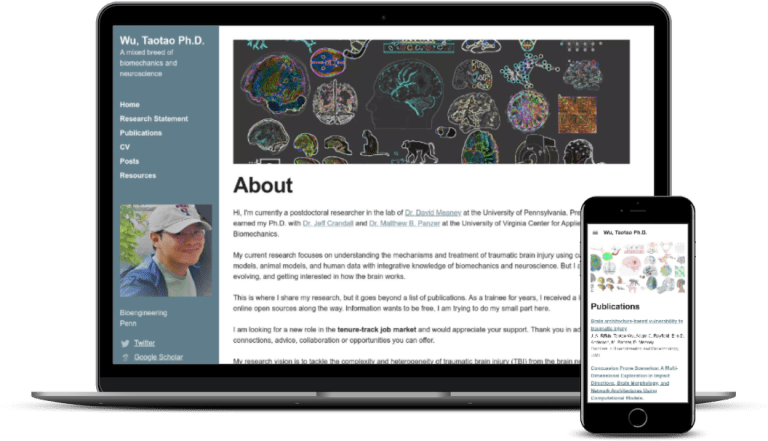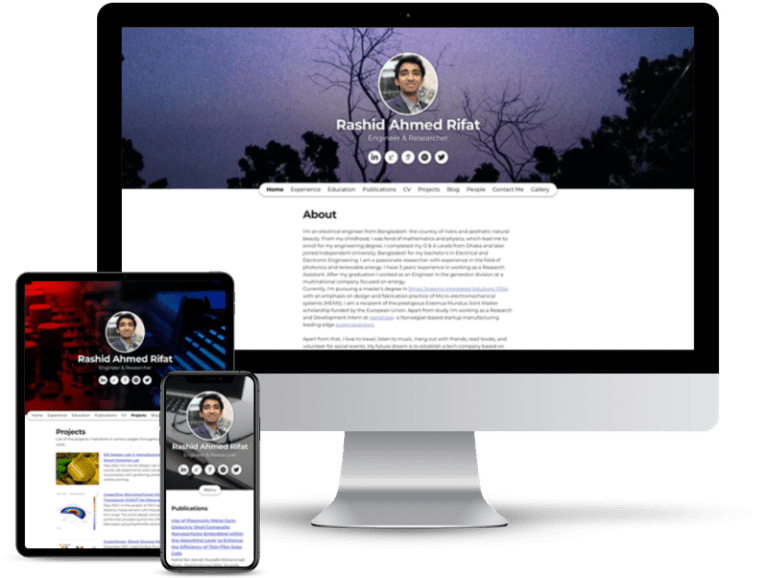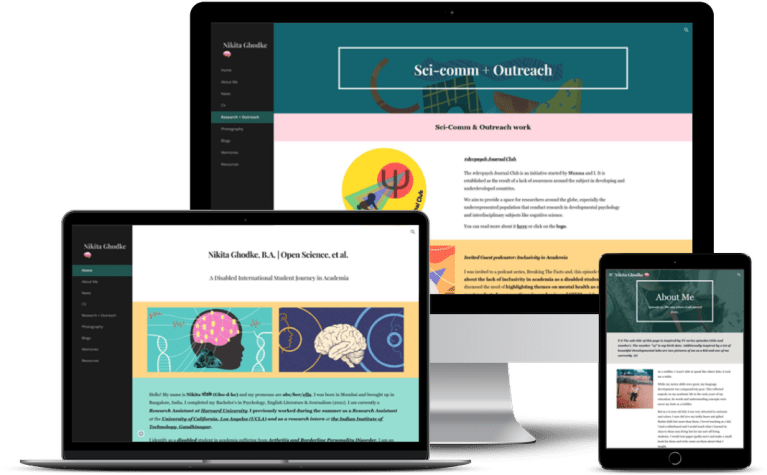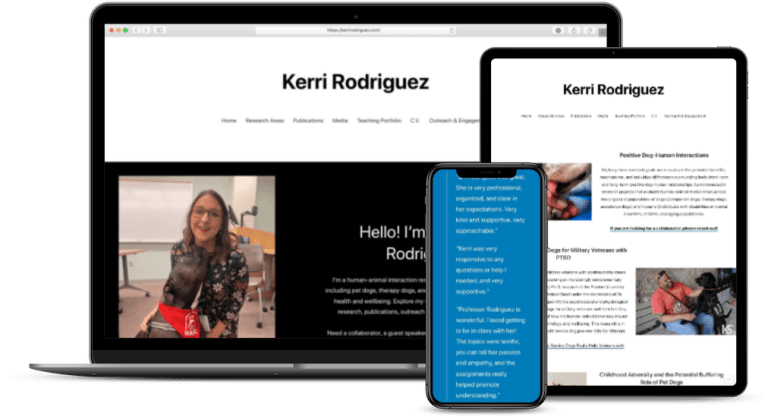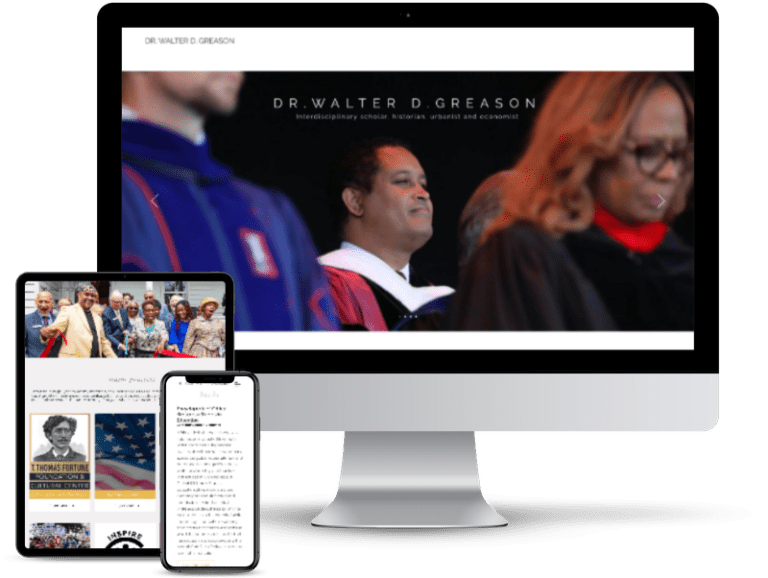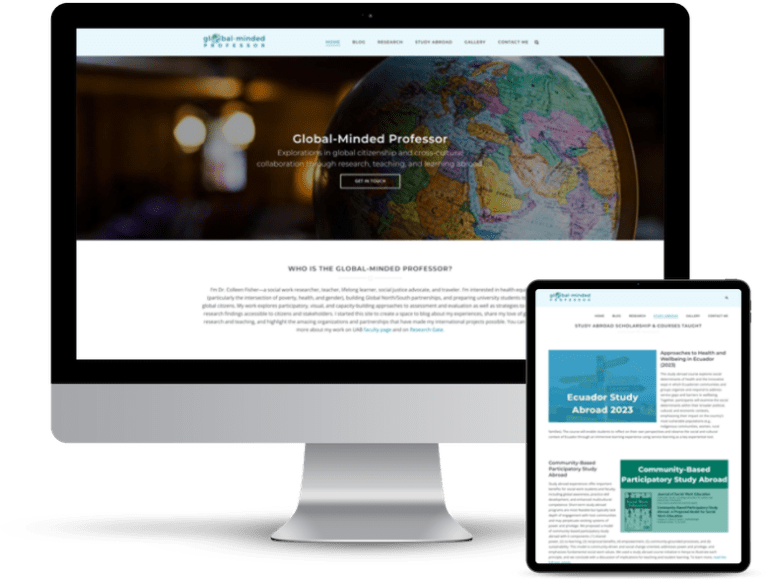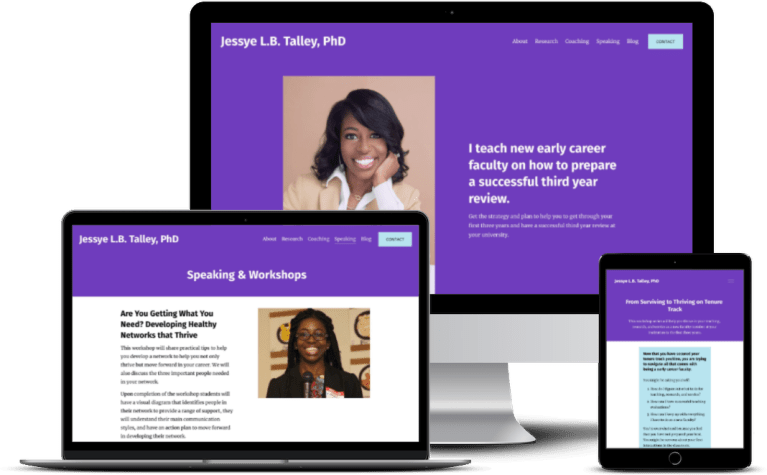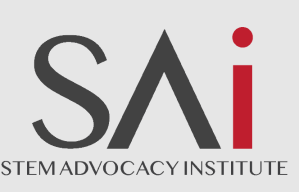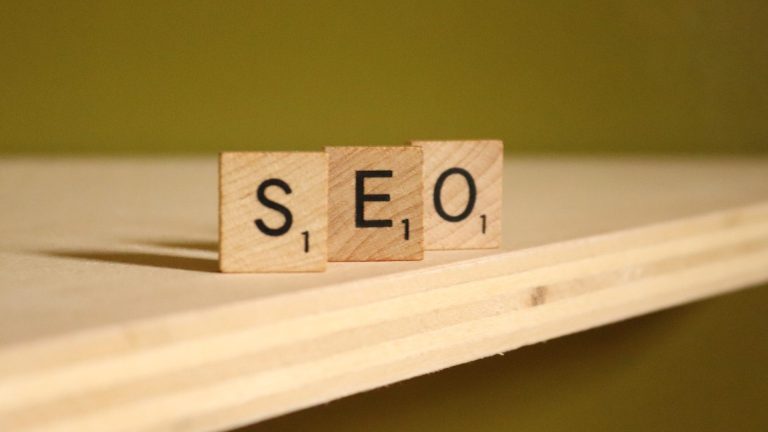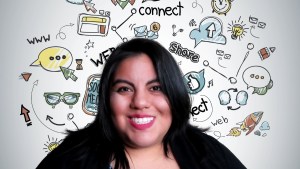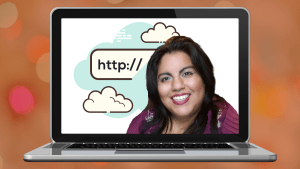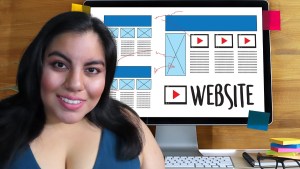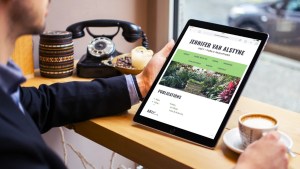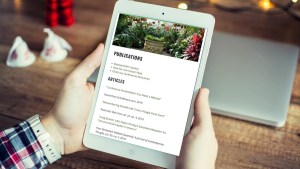Your online presence creates a legacy for your work and supports your professional goals for your research, teaching, and leadership. And yes, you probably have been putting it at the bottom of your to-do list… Join us and let’s change that!
This Q&A was hosted by Ana Pineda, PhD, of I Focus And Write on October 10, 2024.
Introduction
Ana: This happens a lot to me too. Just quickly for the rest of us watching the recording. I started the recording a bit late, but I was introducing you to Jennifer Van Alstyne, and she’s the expert on having an online presence, not only academic, but personal branding, especially for academics. Although I think your profile goes much further and you all should start following her, and I will send you some links later for her social media, her channels, her website.
I discovered [Jennifer] very early on in this business and something that I hope we are going to speak more about it, I was struggling with my, my online presence as an academic and also as a business. I thought, “Ah, Jennifer one day she, she should come and tell us more. I teach you, this is something I encourage you all when you want to connect with someone, send them an email, send them a message in social media, tell them what you would like to maybe have a coffee with them or organize something with them. And that’s it. This is how Jennifer and I contacted and now she’s here talking with all of you and I’m super excited. Thank you. Jennifer, do you want to tell us a bit about you to start?
Jennifer: Hi everyone. I’m so happy to be here and to talk with you all. Let’s see, I have been helping professors one-on-one with their online presence since 2018. And it really started off as, as thinking that I would help with websites specifically, but most of my clients needed help with more than just their website because being online isn’t just about having a website. You can actually be online without a website, too. And so really figuring out online presence wasn’t a one size fits all solution. A website wasn’t going to be the answer for everyone helped me evolve my business over time.
Now, it’s been like, what, six and a half years and I help people with websites, social media, and bio writing. And really I’d say our work is about confidence. Our work is about the confidence to be able to show up and to feel like you’re worthy enough, and that you deserve space online. I love getting to help people with that.
Ana: Oh, so nice. And I love that you linked to, to this, to the aspect of feeling confident because I was telling to Jennifer like, I think 90% of my audience, of you here, of our students suffer severe imposter syndrome, and this feeling that we are not good enough. And I see that for me, but also probably for many of you that here, this stops us from showing up online and sharing our words. We always feel, I sent an email today with some of those thoughts. The, “who am I to say this on LinkedIn,” or, “am I bragging if I’m sharing this paper that got published.” Something also like, “What is this person going to think when it says that I post this,” right? Something some of my students say is I think on that teacher I had once or something a supervisor said that you had 10 years ago. Sometimes you still have these thoughts of, “What is this specific person going to think? And this stops us. It truly stops us. I hope that also for all of you that you live with some ideas of how to stop these imposter thoughts when it comes to your online presence today. Love it. So for today, it’s a, Jennifer told me, I love interactive sessions and we need your help. Please, we need your help for the, of course I have questions here ready for Jennifer, but we would love to hear your questions.
Jennifer: I have a question if that’s okay for everyone who’s listening. This is one of the questions that I, I like to ask people when we start working together because it really is different for everyone, no matter where you are on feeling imposter syndrome, no matter where you are in your career.
How you feel about your online presence is, is very internal. It’s very personal. So I’m curious if 0 is like, “I don’t have an online presence at all,” and 10 is like, “I have a great online presence, I’m really confident in it. It’s the exact online presence I want.” Where are you on that range? From like zero of no online presence at all to 10, amazing online presence.
How would you rate yourself? 4, 2, 3. Yeah. Quite low. Good. This is very, very normal. Very normal to feel like maybe there’s a lot more you could do or maybe want to do to have a stronger online presence.
I’m curious, those of you who feel like you’re on the really lower end of the scale, 0, 1, 2, 3, I’m curious, have you done something for your online presence already or is this like, “There’s a bunch of things that I want to do that I know I’m not doing and I really don’t have an online presence at all.”
Where are you thinking when you’re at the lower numbers? Is it more about actions that I haven’t taken or actions that I’ve taken that don’t feel like enough?
‘I think I’ve tried a lot.’ Yeah. Oh my, ‘the university forces me to,’ I love that answer. For a lot of people that is perfect. Yeah. Okay.
I just wanted to show even though we’re all here and we’re all here together and there is a range for where people feel for your online presence, my hope is that by the end of this workshop you’ll feel like there’s at least one small step that you can take to improve that in a way that’s really meaningful to your life. If not more. My hope is for more, but at least one.
‘I haven’t done anything because I thought why do I have to be online?’ Well, we’ll chat about that. It’s different for different people. So, saying that you have to be online for your research, you have to be online for a job market or you have to be online for, you know, any specific reason. It’s not going to work for everyone. And finding the true reason (or reasons), it’s going to be helpful for you. Hopefully we can get closer to that today as well.
Subscribe to The Social Academic blog.
The form above subscribes you to new posts published on The Social Academic blog.
Want emails from Jennifer about building your online presence? Subscribe to her email list.
Looking for the podcast? Subscribe on Spotify.
Prefer to watch videos? Subscribe on YouTube.
What are reasons scientists and academics should have an online presence?
Ana: Oh, I love that. And actually that is how I would like to start. So what are the main reasons, Jennifer, that you say why you should, everyone have an online presence? Maybe there are a few things that you think, oh this situation, these moments, you really need to, to work on this.
Jennifer: Well, I’ll tell you why I thought when I started people should have a stronger online presence. I really thought that if you put your publications online and you create a way to help people find them, that more people from your potentially really niche topic would be able to read them, engage with them, and share them.
And that’s true, but that’s not actually a motivating reason for the majority of people that I work with. I would say for most of the professors that I work with, they want to help more people.
They want to help more people. They want to invite opportunity for themselves, but not just any opportunity. They want to invite aligned opportunities aligned with their research, aligned with their values, aligned with what they want to be focusing their time on.
Attracting opportunities is all about finding the right people. It’s about making sure that people can see and engage with what you share. That can potentially lead to greater connection, collaboration, or a long-term working relationship. I would say it’s mostly about people and making sure that that connection is possible even when you’re not in the same space.
Ana: Oh, I love this. And actually, you know, I mainly started using as online presence, let’s say Twitter, on social media. And I don’t know if you, you also said this, but in the past there was some, they did some study and they saw that the more people tweeted about papers, than the more citations they have.
Jennifer: Yes, that is definitely true. It’s also a bit limited in how we think about it.
Ana: Yes.
Jennifer: Yes, more people will see your paper when you share it online. The question is, is it the right people? Is it the right timing? Are they still going to see it after your one post?
There’s so many ways that we can share publications, really thinking about who we want it to reach and how we want to be able to help people with the hard work we’ve already done makes a really big difference for how we show up online.
So yes, always sharing your work gets more citations, gets more readers, which is great. My hope is that it’s really engaged readers, aligned readers. Readers who could potentially cite and use your work.
Ana: Yes.
Jennifer: So I’ve actually gotten more narrow in my focus for who I’m hoping to reach in my work with professors.
Ana: Yes, I love that. And actually, it was later on that I think there was another paper that also, like you said, it was like, “more citations, really, but what was then the impact of this effect?” But what they saw is that the big impact in the end, like you said in people, in networking, in collaborations, in relationships. And this is really beautiful.
Lenny says here, ‘they trying to build multidisciplinary approach of a problem, building a network is the only way and networks are so important, right?’ Networks of the right people, like you said. I love that. Yeah. So good.
Why do professors want a website, social media, or blog?
Ana: And continue with the why Jennifer. I would also like to know why your clients come to you. So do they come, do they want a website? Do they want social media? Do they want blog? What is it? Tell us more please.
Jennifer: I would say most people come to me because they want, or are thinking about a website. Oftentimes it’s something that they’ve wanted for a long time. Maybe they tried to do themselves or did do themselves, but it isn’t meeting their needs.
My most popular service is like a big website plan where we either redesign or create a website that really meets their long-term needs. That takes in-depth interviews, I mean we spent about five hours talking before I even start planning the website. That’s because for a lot of people, their needs are are so nuanced. And we really get to understand what’s going to be exciting for them, what’s going to be engaging for the people that they hope their research or their teaching research reaches.
And then some people also have different areas of their life that they want to be able to share on their website. A lot of people also come to me because they want to bring together multiple identities into one personal academic website.
Or, occasionally a website that works for both your personal website and your lab website.
The website that’s right for you doesn’t necessarily look like the website that was right for someone else. That’s why professors like to work with me, cause we find that together. They feel like they don’t have to do it alone and if they don’t want to. They don’t have to touch the website themselves, they can just have it done for them.
So especially the people a bit later in their career, like to be a little bit hands off. People who are early career researchers, we get more involved and do more things together. So yeah, it’s really fun. We customize it to what best meets the professors need.
Ana: Yes, I love that also that you said it. Every need will be different, right? And I think that’s the problem with university websites, that they are very standard first and you don’t have much there to say. So actually, if you have any questions about websites right now, please share it in the chat. So maybe we can go through there.
Holly has posted a a question, Jennifer. Maybe you can read it.
Professional website vs. Academic website vs. Lab website
Jennifer: [Holly]: ‘What are the main differences between a professional website vs. an academic website?’
I’d say there, there’s not really one. I mean it’s just the label that we’ve called the website that is meant to represent you. So, if you as a person feel like your professional identity is different from your academic identity, which is true for many people, sometimes those people actually prefer two websites.
Or they prefer to focus their website on just their professional identity vs. their academic identity. When I say that, it’s more about the audience that you hope comes to the website. If you’re hoping to mostly focus on other academics and researchers, you might have academic content there even if you have a separate professional life and maybe you’re picking and choosing what goes on there. But overall, they could be the exact same website. You could have the same label for it. It’s more how you think about your own identity, if that makes sense.
Ana: And yes, jumping in the to the effort example, I find something really useful of websites that you can attract like stakeholders, right? Like people more like maybe policy makers or companies who might be interested in applying what you are working on or, or the press, right? More for science communication. Do you then recommend to have like one single website but maybe with different sections or apps? How, how do you recommend people to deal with that?
Jennifer: I always recommend one website when possible. The websites I recommend separating out are if you have a research lab where you’re going to be highlighting your team, oftentimes the professional/academic website, the personal website version of that. It makes better sense when it’s separate.
That’s not to say that a research lab website can’t support a personal identity. It’s just that the website that you may want to build out for yourself, maybe as extensive as the research lab website, but highlighting different things. I often, often recommend separate personal website and research lab website.
In terms of consulting or like a professional identity that is separate from an academic one, I often don’t recommend dividing it. Now, if you have a business that is like officially registered, you may have to divide it for like legal reasons for. Maybe for a Terms and Conditions page or a Privacy Policy that is specific to your country.
But for most people I would say that that one website works. You can have two in one. Adding a Consulting page, adding a Services page to your academic website can really enhance how people who are at NGOs, at corporations, at other universities, at federal and foundation funders. All sorts of people like publishers, people that are outside of academia, or outside of your institution will be able to better understand you and your services and your consulting. How you approach those things from the academic pages on your website as well. I don’t typically recommend splitting your identities when possible.
It’s also easier to manage one website. So less less work overall.
Subscribe to The Social Academic blog.
The form above subscribes you to new posts published on The Social Academic blog.
Want emails from Jennifer about building your online presence? Subscribe to her email list.
Looking for the podcast? Subscribe on Spotify.
Prefer to watch videos? Subscribe on YouTube.
Stories about opportunities from your online presence
Ana: Yeah. That’s great. And actually I was wondering, do you have any win story of people after making their websites for us? We love those.
Jennifer: I’ll be really honest and say that I’m bad at keeping up with professors that I’ve worked with after the fact. But when I have, I get really delightful stories. So one of them, this is just like a few weeks after we’d launched his website and we were adding something in. We were meeting again live. He told me this funny story that he was just at a conference in his field. This was someone who was on sabbatical this year, so he wasn’t engaging as much with the research community. He was working for the federal government at the time for the year so he hadn’t been super engaged in the research community.
When he was at this conference and someone came up to him, they recognized him, like they’d seen his photo. They said, ‘I’ve explored your whole website, I learned all about you. I would like to talk with you about a job offer.’ Now my client was not job searching, he was very happy in his position. He had his next few years very planned out. But just the fact that someone knew so much about him, about the things that he cared about and brought this actually quite aligned conversation into an actual meeting space in person so soon after the website was launched was shocking.
Also, a PhD student whose dissertation was requested by a national publication. Like they wanted them to do a writeup for a national publication just a week after launch. That’s another example of opportunities that can just come essentially as soon as you have a stronger online presence.
But those are really kind of short-term things. And the long-term things that I care more about are really about how you feel about sharing what you do.
Most of the professors that come to me, no matter where they are in their career, I wouldn’t say it’s necessarily imposter syndrome, but there is a feeling that people might not care. Like, you can know that your research is really good, you can know that you’re respected, you can know that you have people who care about you and still feel like there’s not someone who will care when you celebrate something that might feel small in comparison to other things. Or, that might feel big but almost too overwhelming to share.
What I like about working with professors is that by the end of our work together, there is this transformation of, “I deserve to have this space.” Like, “I deserve to take up this space and when I take up this space, it helps more people. It helps more of the people that I’m already trying to reach with my research. It helps more people and more students that I’m teaching,” find maybe the network or connection that they’re hoping to. There are ways to help far more people than just yourself with your website or with your online presence.
Ana: Yes. This is so nice. Connecting how you can help others is a big thing. And you just pointed also to the students, it is said that many of my colleagues, especially those that have websites, they’re also very popular with students who want to do their master thesis with them.
Jennifer: Yeah.
You can have a website for your teaching (even when research isn’t your focus)
Ana: And and that’s really nice, right? That you are also sharing your work and students can find their passions thanks to that too. Eh, love it. Oh, there are some questions.
Jennifer: Before we jump into questions, I just wanted to say that I’ve had clients who are very research focused with their website and I’ve had clients who are very teaching focused with their website.
And you can be both, but some people who are more teaching focused in life sometimes feel like they don’t deserve that same space online. But teaching resources are so valuable for students, for other faculty, for other graduate students or PhD students who might be starting to teach in your field.
Oftentimes when we get into those interviews about: What can we create with your website? How can it change and impact your life? We find really nuanced ways that it’s going to be meaningful for you. Whether it’s creating a Recruiting page or sharing a Student Internships list. There’s just so many options for how to talk with and connect with your students through your online presence. If you want to.
Subscribe to The Social Academic blog.
The form above subscribes you to new posts published on The Social Academic blog.
Want emails from Jennifer about building your online presence? Subscribe to her email list.
Looking for the podcast? Subscribe on Spotify.
Prefer to watch videos? Subscribe on YouTube.
Having an online presence when your research is about sensitive topics
Ana: Yes. So nice. Yes. So there are some questions coming in. So, something that was asked, “How can we deal with being out there online when we research sensitive topics such as police violence?”
Jennifer: Ah, that’s a great question. Actually, one of the examples that we can look at today with Dr. Cheryl L. Johnson, she’s an early career researcher who works with violence and weapons and guns, especially juveniles who carry weapons.
Sensitive topics is something that makes a lot of people stop in whatever actions they’re taking to have a stronger online presence. Part of that is for self-protection. Part of that is also knowing the reactions that people might have based on what you share.
Whenever you have a sensitive topic, I really want you to think about the people that you want to help. Think about the people who really you do need to reach rather than thinking about all the people you want to avoid focusing on who needs to see your research to make that difference. That’s the introspective part that I recommend starting with.
For many of the professors I work with who have a sensitive topic, I would say that is another reason why people come to me to work together. We have found that sometimes posting on social media feels less safe. There are some spaces online that feel less safe and that maybe they don’t want to explore at this time.
Whereas having a stronger online presence, it doesn’t mean that it’s necessary to be on social media. And so we found what they felt and we felt together were safer options was through having their personal website and through having a LinkedIn profile that was filled out to a point where it would show up in Google quite easily and people would be able to find them based on that particular research topic online. But, they wouldn’t feel like they had to post about their topic specifically inviting potential negative reactions in order to help people find them.
Want a stronger LinkedIn profile? Read about LinkedIn for academics and researchers.
Graduate students, I have a LinkedIn article just for you.
If you’re someone who has a sensitive topic and you’d like to be talking about that online, I also want you to consider your safety, your personal safety, but also your emotional and mental safety and think about how you’d like to respond to things and come up with kind of like worse, like what you’re going to do in a worst case scenario. Like, let’s say you do post about a sensitive topic and it goes viral and you know, this is really bad. You’re getting, you know, messages and comments and it just feels so overwhelming. What are the steps you’re going to take at that time to make yourself feel safe to, to help yourself move past this hopefully momentary situation? Yeah.
Ana: Yes. And just for everyone also to realize that indeed in social media, people comment, but on your website you don’t need to activate any comments, eh?
Jennifer: Yes.
Ana: So that is, it’s a way of keeping yourself safe and it, so social media platforms, you can deactivate comments too, right? That nobody can comment on your posts.
Jennifer: You can, but I do want to say that deactivating comments, having, having a website, like not inviting comments doesn’t mean that you won’t get comments. People who feel really strongly about things may still email you.
Ana: Yes.
Jennifer: People will report you to your university. I just want you to know that anything you do or say online, it can be screenshotted, it can be shared, it may be reported.
This isn’t to create fear in you. It’s to let you know that universities typically do not do anything on the other end of that. They get reported to all the time and oftentimes, there’s not a lot that happens.
Ana: Okay, thank you. Thank you for that Jennifer.
Subscribe to The Social Academic blog.
The form above subscribes you to new posts published on The Social Academic blog.
Want emails from Jennifer about building your online presence? Subscribe to her email list.
Looking for the podcast? Subscribe on Spotify.
Prefer to watch videos? Subscribe on YouTube.
When social media doesn’t feel authentic to your personal values
Ana: Now actually, you are making recommendations about social media. So indeed we have another question from Vidal: “What to do when our online presence does not feel authentic to our personal values, especially in social media, but our field is very much dependent on that?” Do you have any advice for this?
Jennifer: I wouldn’t recommend anyone be on social media unless they want to. There have been scientists and researchers for decades who have not used social media and still found connection.
But then you’d want to potentially be intentional about how you are connecting with people and keeping those long-term relationships in some other way.
I like social media because it means I can connect with those people and I can still message them or communicate with them at some point in the future, even if we haven’t talked in years. And so if you’re someone who’s open to being on social media but not posting, that could be a good way to still get that kind of interaction online.
But if it goes against your values, like I’m not going to ask you to change your values and your university shouldn’t ask you that either. In fact, universities sometimes come and ask me to do workshops and I have said no depending on what they’re asking because I won’t force any professor to accept the terms and conditions of a social media platform. You know, there are, there are some things that they just don’t agree with.
I’m also not going to force any professor to have a website if they don’t want one. I really think that it is a personal choice and there are other ways to create connection lasting networking in your field beyond social media, even if that’s the norm in your field.
Ana: Yes, thank you so much. And actually a couple of comments about that that I only realized later, right? That social media is a type of marketing, social media marketing, but it’s not the only one. Actually something very common with scientists is to do PR, public relations and speaking and going to conferences. This is also a powerful way of marketing that you are doing. I don’t know if in, if it is required for social media, but maybe what is required is to do more of this marketing. So you could also consider to, well go to conferences which are more scientific, but maybe also work more with the press in journals, interviews with the radio, maybe block platforms that publish blog posts. There are indeed, definitely there are other ways.
What is your online presence for professors and scientists?
Jennifer: Now when I say online presence, what I mean is that when someone goes to Google or another search engine, if they put in your name (or maybe your name + the area of your research), are you going to come up?
And when you do appear in search results, can they find what you hope for them to find quickly? What you hope for them to find is probably a bit about you, potentially a photo of you, contact information, your areas of research.
Now when you’re hoping to communicate with journalists in the press, you want to come up pretty high. Like you want to come up high in those search results. You want to make sure that they’re able to find you for topics that you actually want to speak about. You don’t have to have a website, you don’t have to have social media profiles in order to attract media attention. But you do have to, if you go to Google, you have to be findable with your name and also with your areas of research.
Ana: And actually I want to drop there a little tip for everyone. If you don’t have Google Scholar, activate it. Please do so because Google Scholar is from Google. So if you search your name in Google and you have a Google Scholar account, that will pop up, often quite high. And when we do this, actually if you, I hope you all know how to add Incognito window in your browser. Maybe just now do this exercise. Open an Incognito window if you know how to do it. Otherwise just open a browser window and Google your name and research and see where do you appear.
Tell us in the chat, I’m curious. Count the number of position and are you the number one, are you the number 10, you are not on the first page. We’d love to see how that is because if-
Jennifer: Yeah, let’s do that.
Ana: Yeah, if you are not high, definitely there is more there to do. But if not, indeed Google Scholar, please be sure everyone has it with a picture, it’s really with the papers that are yours because otherwise Google Scholar puts random papers. So have a, an updated Google Scholar profile. We would love to see that.
Subscribe to The Social Academic blog.
The form above subscribes you to new posts published on The Social Academic blog.
Want emails from Jennifer about building your online presence? Subscribe to her email list.
Looking for the podcast? Subscribe on Spotify.
Prefer to watch videos? Subscribe on YouTube.
Where should I host my personal academic website?
Ana: In the meantime Jennifer, we can see more of the questions that came in. Jacqueline asks, ‘Are there specific website hosts domain you can recommend? I’m always a bit concerned about hidden costs with publishing a website.’
Jennifer: Yeah. Easiest way to make a website for free or very low cost is Owlstown.
Ana: Love that.
Jennifer: Owlstown is run by my friend Dr. Ian Li. He wanted to help more professors and scientists be able to create a website with ease.
And when I tell you it can go up in as little as 15 minutes, like if you start it now, it could be done by the end of our workshop. That is true. We have done it together live on a demo. So I really recommend that for a lot of people.
If you don’t care deeply about how your website looks and feels in terms of having control over all of the parts of it, Owlstown is an excellent option for you. I recommend it to a lot of people.
For professors who do want more control over the look and feel of your website, you want to be able to change all of the colors and have different types of pages and formats and layouts. I love WordPress.com.
WordPress.com has great customer service. It’s more affordable than some of the other hosts and it has built-in security and protection. If something goes wrong with your website because someone’s trying to attack it, they have a whole office that will deal with that.
If your website goes down like mine has twice, they have resolved that for me within an hour. I really like WordPress.com. That’s what I set up most of my clients on.
I also like Squarespace.
I do not like Wix. Wix is very buggy and glitchy. In fact, most of the people who’ve come to me for website redesigns have been quite unhappy with their experience on Wix. And so we’re migrating their site to typically WordPress.com.
If you like WordPress, but you don’t want WordPress.com, you want more control over your WordPress, Reclaim Hosting has really great prices for academics and they focus on the academic community. Yeah, Reclaim Hosting is my recommendation for a managed WordPress host where you have full control.
WordPress.com is my number one recommendation.
No Wix, no Weebly.Does that answer your questions?
Oh, Google Sites. I should mention that because my friend Brittany Trinh, who does websites for scientists, she likes Google Sites for people who are just starting out.
But if you like that personalization, WordPress.com or Squarespace is probably going to be a better fit.
Oh, for people who are trying to decide between WordPress.com and Squarespace ’cause they’re both very trusted, highly recommended companies? Squarespace is a little bit more sleek, but its features are a little bit more geared towards ecommerce and selling products. So, in the future you’ll see that some of the changes are more geared towards that.
Whereas WordPress has been a blogging platform for so long that it’s never going to lose all of those capabilities and it’s going to continue to improve them. I like WordPress if you ever plan to have a blog, podcast, or YouTube channel in the future ’cause it’ll give you more, like backend options for the structure of your website that helps Google better understand it. So if you think, “I don’t want to blog now, but I want one in like six years,” start your website on a WordPress site.
Ana: I just want to add something really funny. I have your worst recommendation that is Wix.
Jennifer: Sorry, sorry, If you have a Wix website and you like it, please keep it. Don’t worry.
Ana: No, but I recognize if I were to start over for what I do, which indeed I need much more capabilities, I would definitely do WordPress.
But I always recommend also Owlstown for academics who wants a simple solution because you can also do quite a lot and they show examples and they are really nice actually. Maria Jose, yes. Did hers and really enjoyed the process. Yeah, she was very fast in making it. It was amazing. This also is great. How funny. Okay, so I see Jennifer a lot of people are ranking number one. Amazing! But they had a very nice point, which links to another question we had.
Check out my article on website hosts for your personal academic website.
Subscribe to The Social Academic blog.
The form above subscribes you to new posts published on The Social Academic blog.
Want emails from Jennifer about building your online presence? Subscribe to her email list.
Looking for the podcast? Subscribe on Spotify.
Prefer to watch videos? Subscribe on YouTube.
Website, LinkedIn, X, or ResearchGate for scientists?
Ana: Natalia actually was asking also, “What is the difference between the website being active in LinkedIn, X, or ResearchGate? Do they have similar impacts? What’s your opinion?
Jennifer: Academic social media platforms are mostly for academics. And by that I mean that if you’re hoping to reach people in policy, if you’re hoping to reach practitioners, if you’re hoping to reach maybe researchers outside of the academy, if you’re hoping to reach nonprofits, NGOs or foundation or fellowship funding, all of these people like may not have access to or may not regularly use those academic social media platforms.
And that’s one of the reasons why having Google Scholar set up, making sure that when you Google yourself people can find you is really beneficial because there’s so many people beyond the researchers who like to read peer reviewed research who would benefit from finding and connecting with you and who you would benefit from finding and connecting with as well.
Because of that, I really like LinkedIn profiles because it’s where most of those professionals outside of academia do at least have a presence, even if they’re not actively spending time there. Google Scholar because it helps you better show up in Google search results.
And having any of the places that show up at the top of those search results. So maybe your faculty profile, maybe you have a bio on another website of some kind. Making sure those places that do show up at the top of Google search results are updated when possible. That’s going to help.
Anything else you do is going to enhance that. So like if you create a website that’s then going to show up at the top of search results, so it’s going to be an even better and more engaging experience where people can learn even more. But if, when you Google your name, you’re finding the search results that you want, you probably don’t need to increase your online presence in that kind of way unless it’s something that you want for yourself. Did that make sense?
Ana: Yes. We have Natalia there. I also always recommend, in terms of social media, for those of you who want to do social media, to do either LinkedIn or X, Twitter, is through, you hear and see in Twitter and X that there’s quite some haters, but at least in my experience in the academic world, no. And again, not in my academic world, but maybe indeed if you work in sensitive topics, you might get more of these haters. In my world, not really.
Jennifer: I would also say if you are a minority, if you are a person of color, again, yeah, sensitive topics, if you identify as LGBTQ+, there are haters on every platform.
So it’s not like if you go to Instagram over X, it’s going to drastically improve your experience. The people that I’ve interviewed on The Social Academic who’ve experienced really negative reactions experience them everywhere they go.
So I just want you to know that it’s not like you can avoid everything just by being on one, you know, the, the one platform where that doesn’t happen. People thought that Mastodon was going to be like that and it wasn’t. There was just as much hate people thought that Bluesky was going to be like that and it wasn’t.
There’s just as much negative reaction everywhere you go. I just want to put that out there. Like if you are feeling unsafe, it may not be the platform. It may be how you’re interacting with it. It may be that how you feel means that you shouldn’t be there at all.
And as someone who survived domestic violence and had to escape an abusive ex-husband, there have been points in my life where being online was not the safe choice. Where I really wanted to hide. And so I just want to put that out there if something happens that makes you feel unsafe online, it’s okay to remove yourself.
Ana: Yes. Thank you so much for sharing Jennifer. Because there might be people here who also feel like that. And you shouldn’t feel like also guilty for not being online.
Jennifer: Right, that’s what I wanted.
Ana: Yeah. Yes, exactly. I love that you pointed to that. So good. Just to add something to this conversation that adds something that I also recommend when you’re trying to choose like, “Okay, I cannot be doing everything. What should I choose?”
I always say like, what do you enjoy the most? Right? Yeah, some people really have fun on Twitter, others is on LinkedIn, others is maybe in ResearchGate. So just also maybe put more effort on that platform that you enjoy the most.
You also said the key word that I always tell my students, like updated, that’s the key word. I wonder whatever you choose is updated. Not with that. The last paper that you are showing is from four years ago. Have that profile updated and be where you also enjoy it.
I don’t know if I told you all this story, but I started, I just wanted to be a lurker. I just wanted to be there and not interact with anyone and just see what people were doing. So first a colleague told me, ‘but you can create a fake account so nobody knows it’s you, nobody’s going to follow you.’ And I say, ‘oh great.’ But my fake account had a name that was a little bit similar to mine. So of course once I started following the people I knew, they started following me back and this was like, okay, this fake account is not working.
But for years I would not do anything, just look at post. And this was great to stay updated about research, new papers. And then later I did my next step, which was liking and reposting. That would be it. I would never write a comment, I would never write a post, that was it.
And then came the next level which will be commenting to things of my friends, right? Like celebrating with them, they got a new job, you know, they got this grant, this paper and that will be it. There was all these levels that for me at least, each level was more and more challenging. So you also gotta decide what is your level that you feel comfortable with.
Jennifer: Yeah, I’ve actually had professors come to me because maybe they were on Twitter and they’re like, I don’t want to be be on Twitter anymore. Like, ‘I don’t like Elon’ or something like that. And they want to learn Instagram. So then we talk about Instagram, we talk about what that might look like. There’s so many features on Instagram. How you use Instagram isn’t going to be the same way someone else uses Instagram.
But when we talk about it, like they’re like, “Oh, I don’t like that.” They’re like, “I don’t like images.” or “I don’t want to do video.” And, and you know, realizing that actually they like writing text, they like thinking about things in text.
Thinking about what you like, thinking about what you don’t like, thinking about what you want to try, or what you don’t want to explore. Do that before you start a platform or do it as you’re starting a platform.
Don’t feel like once you create your account you’re going to have to have that forever. You can delete anything that you’re feeling like isn’t really a good fit.
Ana: Yeah, so good. And, and actually people also were asking like also alternatives for example to X or Twitter. Well I think we covered this. Probably LinkedIn is a good idea in that case.
Subscribe to The Social Academic blog.
The form above subscribes you to new posts published on The Social Academic blog.
Want emails from Jennifer about building your online presence? Subscribe to her email list.
Looking for the podcast? Subscribe on Spotify.
Prefer to watch videos? Subscribe on YouTube.
Do I have enough publications to set up my faculty profile?
Ana: And Sabrina also had a very nice question. “Hey, my university has a website where I can set up a profile yet I’m hesitant to set up a profile because I don’t have any publications yet. Any advice?”
Jennifer: If your university let’s you set up a profile, you should, even if you don’t have any publications. Having one or two sentences in that area that just says what your research is focused on and who you’re hoping to connect with about that research is going to be just as effective as listing publications.
I have seen thousands of faculty profiles and a huge portion of those wherever they are in their academic career don’t have publications listed. Oftentimes that’s because the person who the profile is about hasn’t updated it or hasn’t provided information. Or, the process to update it or provide information just doesn’t exist or isn’t being managed in a way that can actually facilitate updates happening on the website.
I just want to say if you feel the publications or what’s been holding you back, you don’t have to wait because there’s so many faculty profiles out there that don’t have any publications on them. So I really encourage you to do, make that profile.
Whereas if your university offers you a website space, I would actually recommend not using it and making an external website yourself. So profiles, definitely have on your university website. Websites, I don’t recommend quite as much and we can talk about that if you want. But yeah, generally WordPress.com, Squarespace is a better option, or Owlstown. Better options for you.
Ana: Yes, I love that. And I also always recommend that too because yeah, at the end of the day you might leave that university, right? And your, I see your web website, like your home-
Jennifer: Yeah, but also your university may just decide to stop posting websites, which I’ve seen happen at like six universities before. So your website could just be gone next week and you’ll get an email that’s like, “Oh, we’re discontinuing this service,” and it disappears. I don’t want that to happen to you. And that’s why I’m saying it more so than the potential of you moving universities.
Sometimes if you move universities, you can actually keep that website space. I’ve seen that from people too. So it’s not like if you have a space already that like you should delete it. I’m just saying if you’re starting a website project, I would recommend it being on WordPress.com or Squarespace or somewhere outside of your university server when possible.
Do I have to be online every day as an academic?
Ana: Yes. Lovely. And we have here a question also from Elaine. “Can an academic build an online presence by not being online every day?” And this, I love this because we can also connect be with the how what, what would you recommend, and I guess this means more for social media because of course once you have the website, there it is. So what would you say about, about being online in social media?
Jennifer: That’s a good question. So actually I have a question for you, [Elaine]. When you say you don’t want to be online, does that mean you don’t want to post on social media or does that mean you don’t want to check social media at all for an extended period of time? Both answers are totally fine. I’m just curious how using it less looks like for you, if you don’t mind answering in the in the channel, I would love that.
Ana: Maybe Elaine can answer that.
Jennifer: Yeah, or or unmute yourself if you prefer.
Elaine: I meant that I don’t want to post every day. You know, I don’t want spend so much of time there.
Jennifer: That’s totally, that totally makes sense.
Elaine: I think that the algorithm forget you.
Jennifer: Ah, the algorithm.
So yeah, a lot of people feel like the algorithm forgets you. But the people that you’ve connected with do not.
When you think about who you’re connecting with, it’s actually more important than you posting because when people decide to connect with you, it means that they’re choosing to potentially see your post in the future.
Now with Twitter, it makes it really feel like the algorithm is kind of like working against you because you only get that kind of 10 minute window to reach potential people. Maybe they have you in the For You section, so you show up towards the top. But Twitter is the one platform that sometimes feels like you might be more beholden to that. I would just say, post the same thing twice and call it a day.
But other platforms like LinkedIn, if you post once, that post could continue to show up for people for not days, but weeks and months. I want you to think about your content that you share out there in any capacity as something that can last, something that can be useful for people beyond the time that you’re posting it.
Because of that, you do not need to post every day. Not only do you not need to post every day, you don’t need to post every week. In fact, for most of the professors that I work with, I recommend if you can consider, you don’t have to commit to it, but like if you can consider sharing one post per month that can really impact your online presence. Just one post per month. So people know when they visit your profile, you’re still somewhat active. That makes a really big difference.
You don’t have to post every day, definitely don’t have to post every week. And if you want to take extended months off from social media, but you have that stronger online presence when people Google you, you could do that. You could delete all your social media if people are finding you in those Google Search results with ease and they’re finding what you want them to see.
If you don’t want to be on social media at all or you just want to lurk, that’s an option too. I just want you to have that other side of being findable for the things that you’d like people to find you for that that also be something that supports you.
Ana: Yes, thank you. Okay, we’re going to then start moving into the section of the, the how. I think we indeed covered the, the why, the where.
Would you give us Jennifer some ideas of post that people can access easily I could post about this or about this other topic. Content pillars. Or type of post that they could work on.
Jennifer: There, there’s so many things that you can post about. It really depends on what your personal needs are. So like, I mean, if you have a new publication, there’s a ton of posts that we like, you want to do, we could talk about that for a sec?
Ana: Please, yes.
Jennifer: Yeah, so let’s say you have a a new thing. It doesn’t need to be a publication. Like let’s say a new publication, an upcoming conference talk, an event that you’re attending. There’s a thing that you can share.
That is something that can and probably should be shared more than once. So the first, easiest content pillar is sharing things multiple times.
Let’s say you have a publication. One way to start sharing it is actually before you have the publication, I really recommend talking about research in advance. I’m not saying to give away like all of the secrets that you feel like are really new research on Twitter, but what I am saying is sharing that you’re working on something in a particular topic is a great way to clue people in that there may be something to engage with or read in the future. And honestly, depending on where you’re at, if you’re in like the data collection stage, it might help shape and inform your research. So talking about publications even before their publications is great.
When you submit a publication is probably the most popular time for people to celebrate you. When your publication is accepted is the second most popular time for people to celebrate you. People are actually more excited by the process of publication than they are from the publication itself. And that’s not that your publication isn’t important. It’s that what people care about when they connect with you is you. And the publication itself is just the outcome of what you personally have done.
I’m not trying to downplay your publication at all. It’s amazing and there’s a ton of ways to share it once it’s out in the world, but I just wanted to encourage you to consider sharing it early and those kinds of mindsets about sharing things early is true for events, conferences, things that you care about.
If you’re on a committee, if you’re on any kind of service type thing that you’re doing that is important to you, share it while it’s in process, share it while it’s happening because people love that behind the scenes stuff. They love hearing a little bit more about what you’re doing.
If that feels uncomfortable for you and you’re someone who wants to wait until your publication is out, that’s absolutely fine.
We want to share the things that people really need to know. So that’s what is the publication about? Where can I find more information about it? Who should read this? Should I share it with any particular type of people? Answer questions for people who are unfamiliar with your research area and subject because far more people are going to see your tweet or your post about your publication then are going to be excited to read it.
And that’s not a bad thing, but we have to trust that those people have the potential to share it with someone else who might care, even if they personally do not benefit from reading your research themselves. I think that that’s something the scientists and professors that I’ve worked with have struggled with. There is even a feeling that like if I share this with my friends and family members, like they won’t care. Or like, ‘I celebrate this with my husband, but like my friends on Facebook, no one’s going to care about this.’
And that’s actually an assumption that I think a lot of people have. But when we take those extra steps to invite people into why it’s important to us, why it’s something that we spent that time on, who we want to help, it makes a really big difference. And it can really open your eyes to how much people care about you and the things that you’re doing.
Ana: Yeah, I love, I love that.
Jennifer: Sometimes we’re actually doing this like live on the call because the professor that I’m working with is so anxious about sharing this particular publication or sharing with this particular audience that it feels uncomfortable for them.
One time we were sharing a client’s new book. Their book had come out years before, but it was being released as paperback. And she was like, ‘No one is going to care about this book from 2012. This is so old.’
But when we did it together, she had such a response, not just from people who had read the book the first time, but people who were excited to share it with their students, excited to share it with other people, people who said and felt like it was relevant today. That’s the kind of engagement we can invite when we’re more open about what we do and why we care about it. Even if it’s years after the fact, it can still help people. And because of that you still have an opportunity to share it.
Ana: Whoa, this was so nice, Jennifer, because actually I want to share with all of you also that one of my biggest things was like I thought that we could never share anything again.
Jennifer: Yeah, right. So many people feel that way.
Ana: Like, I already did the post about this paper, I cannot talk about it. Yeah, never again. Right? And then indeed that’s not the game of social media. The game is that first, like for I have here the data for, for Twitter, only 5% of your followers are going to see that post, not to start. So yes, keep sharing even the same post.
But then what Jennifer said, all these ideas like before, before when you see me, right when it’s published, I always say when it’s online first, when it’s the final version. So out of one paper you can write different 10 different posts.
Jennifer: Oh at least. Not saying you have to. If you just like the one post, that’s fine. Try to include your why, like why this is important to me, why I want to help people.
But if you are open to posting more, I want you to know that there are many natural ways to do that. In fact, some, one of the exercises that I’ve done with professors is we take a larger piece of content, maybe it’s their article or a book or like a talk something, something that is quite long and figuring out all the ways we can take this one long piece and break it into different social media posts.
And before we do that, before we do this, like sharing, like lots of sharing things, that’s like a lot of time, right? We really think about who we want to help with that. So for instance, if your scientific paper is aimed at helping other researchers in a particular field, maybe all of your focus is reaching those researchers at different times of day so that someone who’s over in Europe and someone who’s in Australia and someone who’s in South America can see it has the possibility to see it. So just posting that same tweet three times at different times of day might make it easier for a variety of people globally to be able to see it.
Now thinking about the who and how we want to help them is what motivates us to then do the work of sharing it. And if you don’t have a good answer to that who and how it’s going to help them or me, it’s probably not going to be worth the time. And that’s okay.
It’s okay when things aren’t worth the time because that’s helping us better focus on other things. It’s helping us better prioritize. So before you start writing things just to write them, think about you know, who you want to talk with and how you want to help them because that’s, that’s going to help you feel like it’s a good use of your time.
Ana: Yes, that’s good. And then still something that helped me was batching. So although indeed it might take time, but for me it was also that moment of saying, okay, now the paper is coming out, let me write four or five posts thinking yeah, for different purposes and then scheduling. And then you have pause for a couple of months. You don’t need to worry about that anymore, eh. And the same, eh. And I love also the perspective again that Jennifer is giving us about the people.
Talking with some of our students, they were telling me, ‘I hate to talk about my own research but they were saying, okay, what about celebrating the people in your team?’ And then their face was like, ‘yeah, that’s fun.’ So they were very excited to, yes, make posts then about their students either like presenting in a conference or a paper of their student or whatever the student did and that motivated them to do this type of post.
So that’s also something that if some of you struggle to talk about your own work, you could start getting this practice talking about your students in your team, your favorite colleagues, why not, and other people that is not you.
Subscribe to The Social Academic blog.
The form above subscribes you to new posts published on The Social Academic blog.
Want emails from Jennifer about building your online presence? Subscribe to her email list.
Looking for the podcast? Subscribe on Spotify.
Prefer to watch videos? Subscribe on YouTube.
Can you share your struggles and challenges on social media?
Ana: And thinking about that, there is a very nice question from S- now. “So what about sharing about challenges? I do like those posts that are very real and natural, but I be hesitant myself to share those like perfection is kicking in, right now.”
What about sharing about challenges, like personal challenges, that we go through?
Jennifer: Ooh, personal challenges really engage people. It really can actually shift someone else’s mindset or perspective and help them with what they’re going through too. So I love when people are open about posting their struggles or a problem that they’re having.
It’s great if you invite your network to get involved with that. If you find that you want support from people beyond your institution or your colleagues, you can ask social media for support. There’s also ways to ask for support anonymously, depending on what your situation is, there may be another account that can post it for you. I love that there are ways to be more open about your struggles.
I did an interview on The Social Academic on my podcast with Dr. Monica Cox, where she talked about her workplace struggles on social media and how actually posting things helped protect her in legal issues with the university. It actually made a big difference that she had posted these things and shared them in something that was admissible in court. I don’t think that that is a likelihood for everyone, but I do want people to know that posting about your struggles for whatever reason, may be beneficial for you. But it also may be beneficial for other people.
Ana: Yes, thanks for sharing. And here of course, it depends the style, your style, what you want to share, what you don’t want to share. Sometimes you might feel also more comfortable to share that struggle once you have overcome. Sometimes we say we don’t speak from the books anymore.
Jennifer: That’s true.
Ana: So that’s something that maybe some of you feel better or, I love personally, this is part of storytelling, right? The, the problem. And, and seeing, seeing you overcoming this problem. For example, when you, when we are talking about publications, if you tell us also something that was hard for that paper, right? Because we have this bias, bias image of paper finish everything successful while there is behind all those struggles that we all go through. So if you share something about that, that’s also a great way of, of connecting.
We are coming to the end. So I just wanted to show quickly. So Jennifer, I know you love examples and I wanted to show you also some examples of the websites that Jennifer has done. Let me see.
I pulled examples from two early career researchers. You’re going to see three websites. One is a personal website, one is a research lab website from the same person. And then another one is a personal website. So I hope that you find them hopeful, inspirational, and you get some ideas from them.
View websites from Jennifer on her Testimonials page.
You do not need to work with me to have your own website. You can definitely make it yourself. And if not, you can hire support locally. You don’t have to work with me (but you can if you want my support). So there’s many ways to create your website and I would love if you shared it with me, if you have one, or if you’re thinking about creating one when it’s live, please email me. I always get excited when people have created websites.
Here are resources on The Social Academic to help you make your own website.
Ana: Oh, this is so nice, Jennifer. Thanks for sharing. Let me drop them then here. And as I have a look, I have a look at them indeed. And we have at least one example of, of something that can be sensitive topic, eh? So you can have a look there also for inspiration.
Jennifer: They may be both sensitive topics to be honest ’cause one is sexual health including transgender people, and the other one is juvenile weapons and gun violence.
Ana: Oh, okay. So actually that the two you mentioned. This is amazing. So good. We are going to close trying to stay on time. I want to thank Jennifer for this super interesting talk. I hope all of you enjoyed. And if you have questions, send them over to me, to Jennifer also on social media. You can please all follow her, interact.
Jennifer: Oh yeah! Let’s get in touch.
Ana: Yes. And I’m going to send the replay tomorrow. We’ll send a replay of this talk in an email and also the links so you can also learn more about Jennifer.
And please, if you have the budget and you want help with this, here you have an amazing person to hire because it’s something important and something that more and more we are giving more attention of also ways of, there is so much time and effort and energy going into your research.
And I always say having this only presence, yes, it takes work, but it can boost that many times. And, and the hard work that you have done is a pity when we just give all that power to the journals to let know about your papers, right?
Jennifer: Yeah.
Ana: That’s it. When you can also boost all that, all that visibility.
Can I use research or professional development funding for my online presence?
Jennifer: Whether you work with me or not, you don’t have to always pay for this out of pocket.
Universities are becoming more and more open to the idea of funding this kind of professional development for PhD students, postdoctoral researchers, professors, other people who work at universities. So I want you to know that there are options that you can explore on campus or through your funders who may be able to support your work on your website or social media.
Ana: Yes, totally. And linking to that, I also work with a lot of people who are grant writing grant proposals. And I, this is also where we basically speak about how the importance of having a, a personal website. Scientists, these people, they don’t have yet a website.
Through that process, they use part of that money to build that website and boost that, that online presence. Because yeah, when you want, especially when you want to go to big funding and big, big funding calls, having a website, it can be quite helpful.
Jennifer: Yeah, funders love when you have an online presence ’cause it means you’re more likely to share the research that you’re doing, that they’re funding and helping the people that, that research ultimately supports. So they are very excited if you have a stronger online presence, whether it’s your LinkedIn or your website, they’re really happy.
Check out my interview with Dr. Julia Barzyk on funding for your research.
Ana: Yes. So totally a moment for you also to, to work on this. Thank you! Thank you so much. Thank you to all of you here. Also those who stay till the end.
Jennifer: Thank you! So nice to meet you all.
Ana: So good. Stay in touch and see you all very soon. Bye bye.
Jennifer: Bye.
Subscribe to The Social Academic blog.
The form above subscribes you to new posts published on The Social Academic blog.
Want emails from Jennifer about building your online presence? Subscribe to her email list.
Looking for the podcast? Subscribe on Spotify.
Prefer to watch videos? Subscribe on YouTube.
Guides and Advice Articles Interviews Online Presence How To’s Personal Website How To’s Recorded Live Resources for Grad Students Share Your Research Social Media How To’s Women in Academia

